

thevarsitynewspaper @TheVarsity



thevarsitynewspaper @TheVarsity
the.varsity the.varsity The Varsity
Sarah Artemia Kronenfeld editor@thevarsity.ca
Editor-in-Chief
Caroline Bellamy creative@thevarsity.ca
Creative Director Andrea Zhao managingexternal@thevarsity.ca
Managing Editor, External
Shernise Mohammed-Ali managinginternal@thevarsity.ca
Managing Editor, Internal
Mekhi Quarshie online@thevarsity.ca
Managing Online Editor
Ajeetha Vithiyananthan copy@thevarsity.ca
Senior Copy Editor
Kyla Cassandra Cortez deputysce@thevarsity.ca
Deputy Senior Copy Editor
Jessie Schwalb news@thevarsity.ca
News Editor
Selia Sanchez deputynews@thevarsity.ca
Deputy News Editor
Maeve Ellis assistantnews@thevarsity.ca
Assistant News Editor
Eleanor Yuneun Park comment@thevarsity.ca
Comment Editor
Georgia Kelly biz@thevarsity.ca
Business & Labour Editor
Alice Boyle features@thevarsity.ca
Features Editor
Milena Pappalardo arts@thevarsity.ca
Arts & Culture Editor
Salma Ragheb science@thevarsity.ca
Science Editor
Kunal Dadlani sports@thevarsity.ca
Sports Editor
Olivia Belovich design@thevarsity.ca
Design Editor
Arthur Dennyson Hamdani design@thevarsity.ca
Design Editor
Zeynep Poyanli photos@thevarsity.ca
Photo Editor
Jessica Lam illustration@thevarsity.ca
Illustration Editor
Olya Fedossenko video@thevarsity.ca
Video Editor
Aaron Hong aaronh@thevarsity.ca
Front End Web Developer
Andrew Hong andrewh@thevarsity.ca
Back End Web Developer
Kamilla Bekbossynova utm@thevarsity.ca
UTM Bureau Chief
James Bullanoff utsc@thevarsity.ca
UTSC Bureau Chief
Emma Livingstone grad@thevarsity.ca
Graduate Bureau Chief
Vacant publiceditor@thevarsity.ca

Public Editor
Ozair Anwar Chaudhry, Lina Tupak-Karim
Associate Senior Copy Editor Vacant
Associate News Editor
Divine Angubua, Isabella Liu
Associate Comment Editors
Vacant
Associate Features Editor
Alyssa Ukani
Associate A&C Editor
Medha Surajpal
Associate Science Editor
Salina Khan
Social Media Manager
The Varsity would like to acknowledge that our office is built on the traditional territory of several First Nations, including the Huron-Wendat, the Petun First Nations, the Seneca, and most recently, the Mississaugas of the Credit. Journalists have historically harmed Indigenous communities by overlooking their stories, contributing to stereotypes, and telling their stories without their input. Therefore, we make this acknowledgement as a starting point for our responsibility to tell those stories more accurately, critically, and in accordance with the wishes of Indigenous Peoples.
U of T, Victoria University, and the University of St. Michael’s College all pledged to divest from fossil fuels before Trinity College’s announcement. ANDREA ZHAO/THEVARSITY
Ahmad Khan Associate Sports Editor Nina Uzunović Associate B&L Editor Vacant Associate Design Editor Biew Biew Sakulwannadee Associate Illo Editor
Vacant Associate Photo Editor Maya Elrick Associate Video Editor
Vacant Associate Web Developer
Copy Editors: Regan Boyles, Lynne Brandolini, Nichelle Budhrani, Olivia Cerello, Noel Chong, Ikjot Grewal, Amy Heinzl, Hunyah Irfan, Sakshi Kale, Darya Kartalaei, Anuraag
Kumar Nair, Robyn Lam, Cindy Liang, Ashley Mary Bejoy, Jen Oh, Michael Tripodi, Kyleeanne Wood, Valerie Yao, George Yonemori
Cheryl Nong
On September 11, Trinity College’s office of the provost announced that the college would fully divest its endowment from fossil fuel companies by 2030 or sooner.
The announcement comes a few months after U of T’s two other federated colleges committed to divest their endowments from fossil fuel companies, with Victoria University making the pledge in April and the University of St. Michael’s College doing so in June. In October 2021, U of T committed to divest its endowment — which amounted to $4 billion at the time — from fossil fuel companies by 2030, a decision that did not include the three federated colleges.
In statements online, student activist group Climate Justice UofT called for the college to divest by 2025. It criticized Trinity College for both a lack of transparency and for not committing to fossil fuel divestment sooner.

review of the college’s endowment “in support of the College’s commitment to sustainability,” and that Trinity College has been “specifically investing in funds that focus on environmental sectors and transition to a clean-energy future” since 2018.
“Trinity has always been a leader on issues of sustainability and the environment,” said Moran, as quoted in the statement. “We are confident we can do this within the time frame and in a manner that maintains the financial strength of the endowment funds.”
In the statement, Trinity College also highlighted multiple other sustainability initiatives at the college, including the Lawson Centre for Sustainability — which the college plans to equip with a rooftop farm and community kitchen after it opens in 2025 — and the Butterfield Environment & Sustainability stream — a segment of the Margaret MacMillan Trinity One Program that aims to educate students on complex issues related to human beings and the planet.
Student reaction
Cover Courtesy of TIFF, Jessica Lam :
Ishir Wadhwa business@thevarsity.ca
Business Manager
Rania Sadik raniasadik@thevarsity.ca
Business Associate
Eva Tsai evat@thevarsity.ca
Advertising Executive
Vacant @thevarsity.ca
Advertising Executive
A changing response to the climate crisis Trinity College’s investments are overseen by the Trinity College Board of Trustees, which is made up of 28 members elected from various stakeholders in the college. According to the college’s 2021–2022 audited financial statement, Trinity College’s endowments amounted to $83,782,000 in 2022.
In a statement posted on the Trinity College website, the office of Trinity College Provost Mayo Moran wrote that the school does not currently hold any direct investments in fossil fuel companies but invests a “small percentage” of its endowment in externally managed funds with stakes in fossil fuel companies.
The statement added that the board arrived at the decision to divest as a part of an internal
In posts online, Climate Justice UofT lauded Trinity College’s decision but indicated that the college should take additional action. “This is a student win & a step in the right direction, but it is not good enough,” the group posted on Twitter on September 12.
Student activists on campus have long called for the federated colleges to divest from fossil fuels. Climate Justice UofT’s 18-day occupation of Victoria College’s Old Vic building, which started on March 27, immediately preceded Victoria University’s divestment announcement, and the organization says that its behind-the-scenes advocacy also contributed to the University of St. Michael’s College’s decision to divest.
In an email to The Varsity, Amy Mann, an
organizer at Climate Justice UofT, wrote that the organization has been advocating for federated college divestment for the last year. Other student groups have called for divestment for at least five years, wrote Mann. Climate Justice UofT organizers Mann, Boomba Nishikawa, and Mathis Cleuziou wrote in a joint statement provided to The Varsity that Trinity College has previously attempted to give the organization a $500 fine for posting “Divest Trin” stickers and had asked if it planned to hold a building occupation at Trinity College.
In its Twitter post, Climate Justice UofT called on Trinity College to divest by 2025 instead of 2030, which the group says is more in line with climate predictions from the Intergovernmental Panel on Climate Change (IPCC). According to the IPCC, global greenhouse gas emissions must peak before 2025 to keep average global temperatures from increasing more than 1.5 degrees Celsius — after which point scientists predict that the effects of the climate crisis will dramatically worsen.
Organizers demanded in their statement that Trinity College divest its funds from companies that build fossil fuel infrastructure. They also criticized the college’s lack of financial transparency, noting that Trinity College has not revealed the size of its fossil fuel investments or created accountability mechanisms to ensure it divests in time.
“Trinity College has not shown leadership. They are months behind Victoria University and Saint Michael’s College and two years behind U of T’s divestment announcement — all of which are already too late,” reads the statement.
Trinity College has not responded to The Varsity’s request for comment.
With files from Jessie Schwalb.
Trinity College becomes last federated college to commit to fossil fuel divestment by 2030 Climate Justice UofT: Divestment pledge is "a step in the right direction, [but] not good enough”
In mid-April, fighting broke out in Sudan between the Sudanese military and a paramilitary group called the Rapid Support Forces (RSF), upending the lives of many Sudanese citizens and resulting in a humanitarian crisis. In response to the conflict, Sudanese students and faculty at U of T have organized to support their communities as they also struggle to support their families back home.
One newly created group, the Sudan Solidarity Collective, has called on the university to simplify access to resources for Sudanese students and increase funding. In interviews with The Varsity, the group also highlighted the university’s lack of response to the Sudanese conflict compared to its reaction to the war in Ukraine.
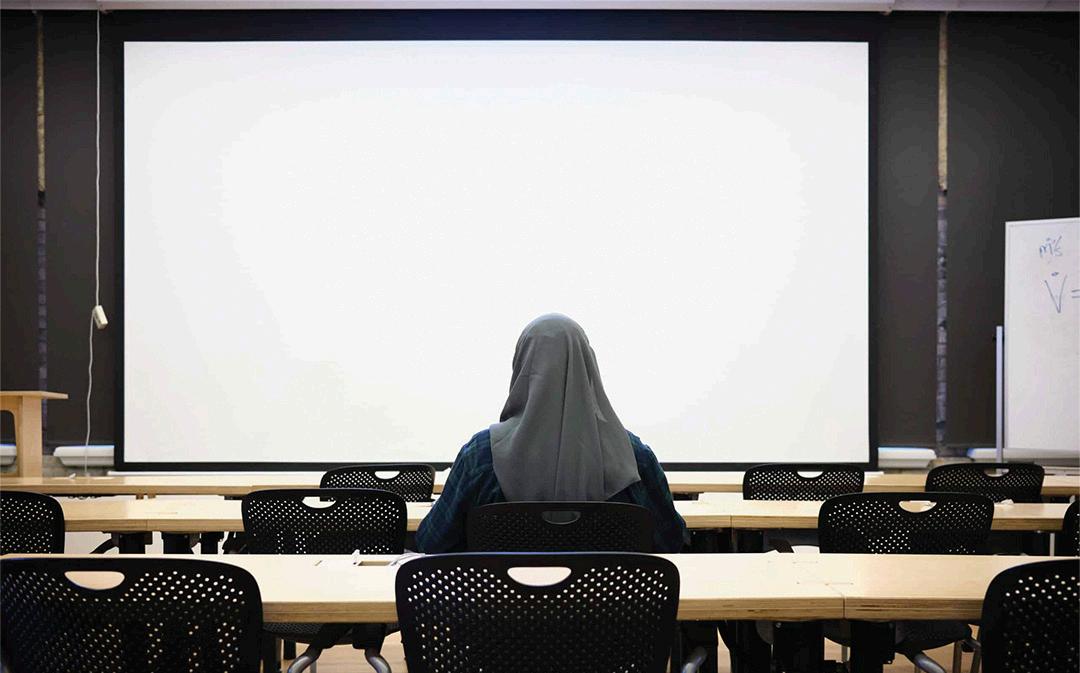
The conflict started on April 15, between the Sudanese military — led by General Abdel Fattah alBurhan — and the RSF, led by General Mohamed Hamdan Dagalo. The military leaders had previously worked together in 2021 to overthrow a joint civilian-military government, establishing a military government. The fighting in April began following disputes over how to integrate the RSF and the military, and which force would retain control over soldiers and weapons.
The Armed Conflict Location and Event Data Project reports that nearly 7,500 people died between the start of the conflict and September 8. The conflict has also spawned a humanitarian crisis, with the United Nations (UN) reporting that more than 20 million people in Sudan currently face “high levels of acute food insecurity.” According to the International Organization for Migration, the conflict has displaced more than 57.1 million people, with the majority displaced within Sudan and some fleeing to neighboring countries.
Since May 2023, the Saudi Arabian government has facilitated indirect peace talks between the parties, hoping to establish a ceasefire that would allow humanitarian aid to reach affected residents. On August 27, Dagalo released the paramilitary’s plan, proposing new negotiations and seeking an end to the war, which al-Burhan rejected in a speech to his soldiers.
In an interview with The Varsity, U of T anthropology and African studies professor Nisrin Elamin highlighted the devastating effects of the conflict on Sudanese people in the diaspora. “Pretty much everybody in Sudan that I know has not received a salary or income since April 15,” she
said. She noted that many students who previously relied on their families in Sudan for financial support must now provide for their family members, forcing them to work more or take time off from school.
The Sudanese Solidarity Collective
To support those affected by the current crisis in Sudan, a group of U of T students and faculty established the Sudan Solidarity Collective. Elamin — a member of the collective — told The Varsity that, after a May 15 workshop held by the Sudanese Students’ Union (SSU), she and around five to seven Sudanese students began meeting regularly, which led to them eventually creating the collective.
In an email to The Varsity, Elamin wrote that the collective aims to hold events aimed at fostering healing and providing education for members of the Sudanese diaspora. Some initiatives it hopes to run include helping resettle Sudanese refugees who have recently arrived in Canada, creating art, and holding political education workshops. The collective has asked the university to provide financial support so it can hire someone — a Sudanese person or someone trained in warrelated trauma — to facilitate monthly mental health gatherings, but it had not received any funding as of September 8.
The collective also hopes to create a Sudan Solidarity Fund that would finance local nonmilitary organizations in Sudan. So far, the group has donated to an association of tea vendors, a farmer’s union, and neighbourhood-based resistance committees. The Darfur Diaspora Association — a group that has supported grassroots initiatives and relief efforts in the Darfur region of Sudan since 2006 — has helped fund the collective and has offered organizational support.
Members of the collective have met repeatedly with the university administration. Leena Badri — a U of T alumna and member of the collective — told The Varsity that the university has been “very willing” to speak with the collective, yet U of T responds to many of the collective’s requests by arguing that it already provide the resources it’s requesting. For Badri, some supports remain insufficient or difficult to access.
In a statement to The Varsity, U of T VicePresident, International Joseph Wong wrote that the university operates the Scholars and Students at Risk Fellowships and Award Program, which offer funding to undergraduate and graduate students who sought refugee status in the past five years
or whose studies have been impacted by conflict or political changes in their home countries. The university also offers emergency grants through the University Registrar’s Office and the School of Graduate Studies. “We continue to look at other mechanisms to support our diverse University community during global crises,” he wrote.
Elamin noted that U of T hasn’t displayed “a lack of empathy” in their meetings. However, she wishes the university would simplify access to services. “[Bureaucratic] processes can be really intimidating; they can often [be] the hurdles to accessing the kind of support and care that people need,” she said.
She mentioned how students face problems navigating the petition process, and questioned why the university could not create a simple form where Sudanese students could indicate what accommodations they needed instead of going through the petition process.
Elamin noted that some of the university’s resources are also lacking. She said that some Sudanese students who applied to U of T have had to defer their studies because their funding package was insufficient.
“If you want to access emergency funds, it’s primarily to finance your own studies. But in the case of most Sudanese, they’re having to also support their families,” she said. Elamin noted that the conception of family in Sudan differs from conceptions of an individualistic, nuclear family that may be more common in Canada.
Double standards
When members of the collective brought up the funding that U of T invested in helping Ukrainian students, administrators told them that a Ukrainian Canadian graduate donated a large amount of money, which the university matched.
“We don’t have wealthy Canadian donors, at least as far as I know, and even if we did have somebody who might be a little bit better off, they’re going to be putting those resources into supporting people in Sudan,” Elamin said. “[But] if [the university] were able to match those funds, why not provide the same funds [directly]?”
She also noted that she’s offered to speak with potential donors about the situation in Sudan, but the university has not taken her up on the offer.
Elamin called on U of T President Meric Gertler to issue a statement in response to the conflict, which he did in response to the Ukraine war. Wong released a statement solely on the U of T Global website, which, as Elamin pointed out, limited its circulation and visibility. Regardless, she said that
the statement “doesn’t hold the same kind of weight as when it comes to the president’s office. “[A presidential statement] would ease the burden of students having to explain why they’re petitioning for time off or accommodations,” she added
On June 2, 26 Black faculty, in conjunction with Scholar Strike Canada — a labour action organization protesting anti-Black and antiIndigenous police brutality — sent an open letter to the office of the president.
The letter echoed Elamin’s sentiment, noting that Wong’s statement did not reach many U of T’s students, staff, and faculty. It called on the administration “to say and do much more,” asking the university to provide students with free legal support to help their family members leave Sudan, to give tuition waivers to Sudanese students impacted by the war, and to offer access to mental health workers who specialize in supporting survivors of war or people from Black and African communities.
Gertler sent a letter responding to the faculty members’ open letter on June 8, sharing his “heartfelt condolences and shared grief over this deepening crisis” and noting the efforts of community members to support and advocate for Sudanese students, faculty, and staff. He wrote that U of T would amplify the message on social media and referred to the services discussed in Wong’s statement.
Elamin characterized the university’s response to the open letter as “disappointing,” noting that Gertler had still not released a public statement.
Elamin also highlighted the work of the Sudanese Students Union, a U of T student group that aims to foster community among Sudanese students. On August 20, the SSU hosted a picnic at Christie Pits Park, with all proceeds going towards a fundraiser the union runs in partnership with the Sudanese Doctors Union of Canada. As of September 17, the fundraiser has raised more than $9,400 for emergency medical relief in Sudan.
According to Elamin, many students in the collective are also part of the SSU.
“Those students are working tirelessly to fill these gaps, but they are undergraduate students who have a whole course of study,” she said. “For them to have to take on that kind of labour is also unfair to them.”
Sudanese students, faculty form support collective to raise funds, foster community
Collective members highlight difficulties faced by students, call for simplified support
In the past few months, the TTC has introduced multiple changes, including adding new payment methods for transit users and closing Line 3 Scarborough Rapid Transit. In a 2015 survey, 63 per cent of respondents attending GTA universities indicated that they use public transit to get to school — suggesting that transit changes dramatically impact the university.
For the U of T students who rely on the TTC and other public transportation services to get to class, work, or other activities, staying updated on transit developments remains essential. Varsity compiled a comprehensive guide to navigating the existing and new TTC policies that are relevant to students.
The basics: Student discounts
When paying for a single fare using a PRESTO card, the TTC charges students 20 years of age and older $3.35 — its general adult price. Postsecondary students in Toronto can access a reduced fare of $3.25 if they pay their fare in cash.
Students 19 years old and younger can pay a reduced fare of $2.25 when using PRESTO and $2.30 when paying in cash. PRESTO cards pay adult fares as default, so people between the ages of 13 and 19 must alter their cards at a Shoppers Drug Mart location or the TTC Customer Service Centre located above Davisville Station to get the discount. Students need a
PRESTO card and valid government-issued identification to be eligible for the discount.
The TTC provides a PRESTO discounted monthly pass — which gives the user unlimited rides for one month — to all postsecondary students, which costs the same as the pass for youth ages 13 to 19. Getting the pass requires students to obtain a TTC postsecondary student photo ID at Bathurst Station. Once they’ve obtained their photo ID card, they can go to any Shoppers or TTC Customer Service Centre to set their PRESTO card for the discounted monthly pass.
Tap of a card
On August 15, the TTC rolled out new payment methods. Now riders can use their debit card, credit card, or a mobile wallet on their phone or smartwatch to pay the fares for any TTC or GO Transit vehicle, including for all buses, streetcars, Wheel-Trans vehicles, and at all subway stations and GO stations.

Fares paid using credit or debit will cost $3.30 for riders 20 years or older — slightly less than the standard adult fare. The TTC advises users to make sure they tap with the same card each time they transfer vehicles on the same trip, otherwise they will be charged a new fare.
Cell service debates
In 2012, the city paid the Australian company BAI Communications to build and operate a cellular network for the TTC. Only Freedom mobile struck a deal allowing its customers to use the network, leaving customers on other carriers without the ability to use the network
besides making 911 calls.
At a news conference on September 11, François-Philippe Champagne — federal minister of innovation, science, and industry — announced that the government would force all cell phone service carriers to provide coverage in the Toronto subway system, with subway passengers slated to gain service starting October 3.
Bell and Telus have argued in favour of cooperatively constructing a 5G network for the subway instead of requiring carriers to pay to access the current network. In August, Rogers Communications began providing 5G wireless service on the portion of Line 1 that is along or south of Bloor St., and on Line 2 between the St. George Station and Bloor-Yonge Station.
The end of Line 3
On August 24, the TTC announced that it will permanently shut down Line 3, or the Scarborough Rapid Transit line. The TTC originally scheduled the Line 3 shutdown for November 18 but decided to close the line earlier after a July 24 derailment on Line 3.
On September 3, the TTC announced that it will implement 903 Kennedy-Scarborough Centre Express buses in place of Line 3. Buses will operate southbound from Midland Avenue and northbound from Kennedy Road between Scarborough Centre and Kennedy stations. The Express Bus Replacement Service will operate using temporary bus-priority lanes. On Kennedy Road and Midland Avenue, the TTC plans to enforce bus lanes by creating “Bus Only” markings and long-term signage.
On August 16, Professor Sandy Welsh — vice provost, students — announced that U of T’s online mental health tool, Navi, has expanded to provide general U of T information in addition to mental health resources. This expansion allows for easier access to the university’s resources for students seeking support about mental health, about a sexual assault, or for their general safety.
The Varsity compiled a list of supports that include Navi resources, as well as others from the broader community.
U of T mental health and safety resources
In 2020, U of T released Navi, a support app for students that provides users with access to health and wellness resources, academic success advice, and counselling services.
While Navi will continue to provide these services, it will now include additional information on admissions, housing, financial aid, careers, and opportunities for involvement with the university community. Given its new capabilities, the name of the online tool has been changed from Navi: Your Mental Health Wayfinder to Navi: Your U of T Resource Finder.
Students experiencing a mental health crisis can also access emergency counselling services 24 hours, seven days a week, through the Good2Talk Student Helpline and U of T’s Telus Health Student Support, formerly known as U of T My SSP. The Telus Health Student Support line provides ongoing mental health services over the phone in 146 languages, immediate support over the phone in 35 languages, and over chat in four languages.
U of T students can contact their campus’ health and wellness centre during university hours for confidential counselling services.

Students experiencing a temporary housing crisis can contact their campus’ student housing office. U of T Student Life’s website also lists that St. George and UTM students can contact the Campus Safety office if they do not have a place
to stay for the night and the university is closed. These students can also contact the Community Safety Office if they are fleeing an abusive situation.
The Toronto Community Crisis Service (TCCS) is an Indigenous-led crisis response team that provides community-based, trauma-informed responses to individuals experiencing a nonemergency mental health-related crisis. The service is based within Division 14, which is a unit defined by Toronto Police Services that covers neighbourhoods like Trinity-Bellwoods, Kensington-Chinatown, The Annex, and University.
Indigenous students experiencing mental health issues can also contact Anishnawbe Health Toronto (AHT). AHT provides health care services based on Indigenous cultures and traditions in-person, virtually, or over the phone.
Black Youth Helpline aims to meet the needs of Black youth and provide access to culturally
appropriate support. Service is available in French as well as other languages upon request.
LGBT YouthLine provides text and chat services for 2SLGBTQ+ youth to discuss mental health, coming out, gender identity or sexual orientation, social isolation, relationships, and more. The helpline is available Sunday through Friday, and trained peer supporters that identify as 2SLGBTQ+ lead the helpline.
The PEARS Project — a student-led, traumainformed coalition — provides peer support and resources to survivors of sexual violence at U of T. Students can contact the group through email, Instagram, Facebook, or Twitter.
St. George students can contact the Torontobased Women’s College Hospital Sexual Assault/ Domestic Violence Care Centre for crisis support, assessment and documentation of injuries, drug testing, and more.
On campus, students who have been sexually
assaulted can access the U of T Sexual Violence Prevention & Support Centre for relevant programs and resources. Students can also contact their campus’ health and wellness centres or the Community Safety Office.
UTM students can access the Sexual Assault and Domestic Violence Services located at Trillium Health Centre, 24 hours, and seven days a week. This service pairs clients with trained nurses that provide one-on-one care, assessment, treatment, emotional support, information, and counselling options.
UTSC students can contact the Sexual Assault and Domestic Violence Care Centre at The Scarborough Hospital. This service offers 24 hour care to individuals who have experienced sexual assault or intimate partner violence.
In emergency situations, students who have been sexually assaulted can contact Campus Safety. Students who live in U of T residences can also contact residence life professional staff or their dean of students.
Where students can find mental health, sexual assault, and safety resources
Selia Sanchez
Deputy News Editor
I’m embarrassed to admit I’m not much of a cinephile. Despite being an art lover, I think I watch a total of 10 movies a year. All around me, my movie-fanatic friends have been anticipating the Toronto International Film Festival, while I’ve sat immobilized by the responsibility of covering an event that means so much to so many.
This TIFF season forced me to immerse myself in the economy of cinema. Attending red carpet events as a member of the press and watching dozens of outlets scramble to ask celebrities questions; watching volunteers with clipboards pace around with headsets; speaking to thoughtful, committed directors; and, of course, reading, researching, and editing the 11 total TIFF film reviews we’re publishing this week — all of these experiences have made me realize there are few industries as passionate as the film industry.
The feeling of walking down King Street West and feeling the energy of anticipation — from reporters

A visionary filmmaker touted as the Godmother of the French New Wave, Agnes Varda often centered her work around the very idea of death. Her groundbreaking 1962 film Cléo from 5 to 7 follows a young singer around Paris in real time as she awaits a possible cancer diagnosis. Rich with tension and humor, it addresses what it means to acknowledge one’s own mortality and to be a woman who has only ever seen herself through the gaze of men.
Throughout her long and illustrious career, Varda continued to hold a mirror to her audiences, though its reflections were anything but conventional. Forever a flâneur, the archetypal “passionate spectator” of modern life, Varda created whimsically iconoclastic, deeply humanizing portraits of people and phenomena that surround everyone but are seen by no one.
At the age of 72, Varda released The Gleaners and I (2000), a shockingly fun documentary that playfully intertwines narratives about food waste and homelessness with her own experiences of living in an “expiring” body. To Varda, aging wasn’t a specter to outrun: she embraced the lines on her withering hands as friends made throughout a life well-lived. Though both films were filmed decades apart, they perfectly encapsulate Varda as an artist who challenged the very foundations of cinema and society while loudly championing the magic of the human experience.
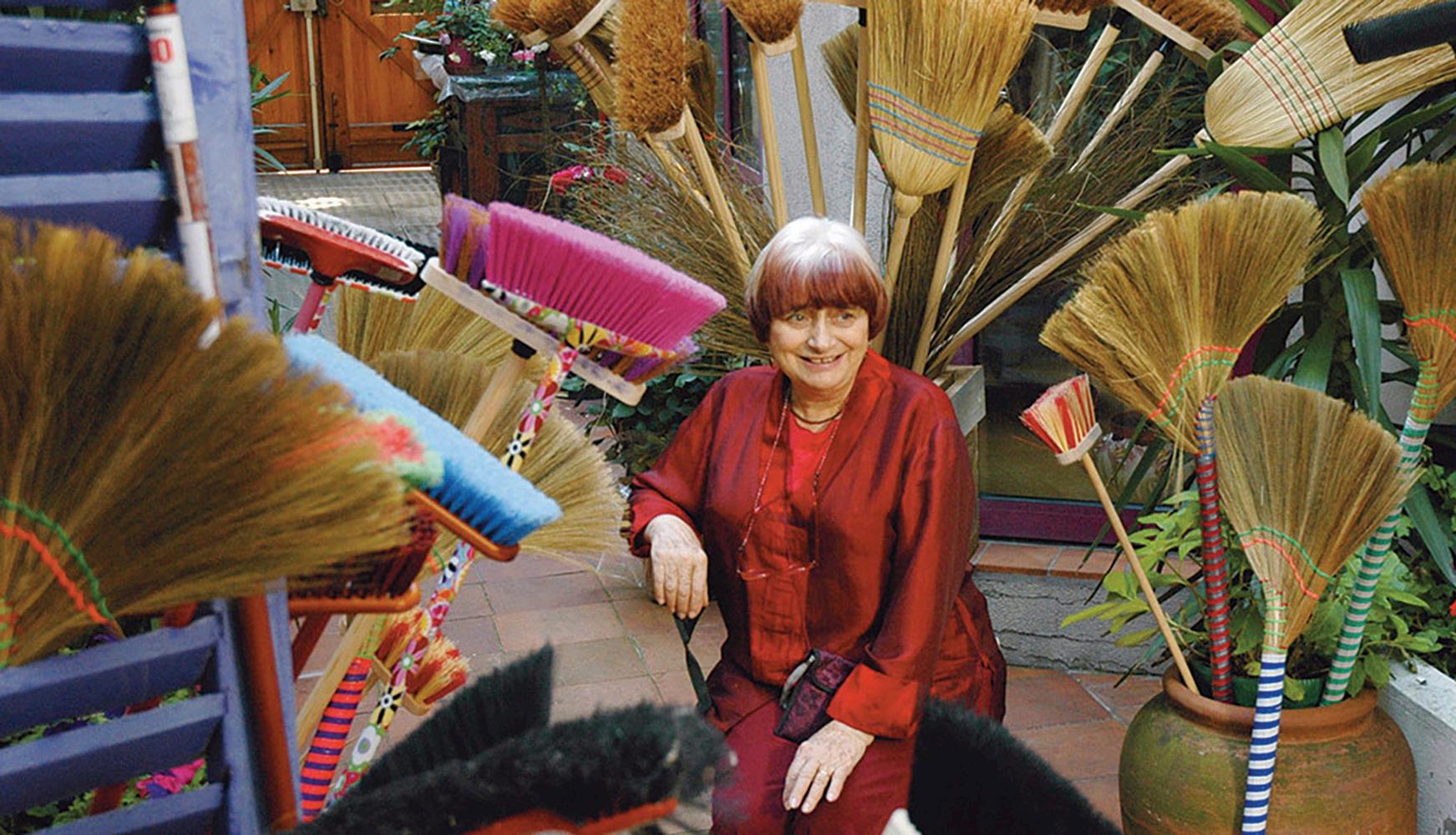
The Pierre-Henri Gibert documentary Viva Varda! played at the Toronto International Film Festival this week to celebrate the life of this cinematic titan who spent decades redefining what it meant to live and die. Only 67 minutes long, it’s packed with never-before-seen archival footage of Varda and interviews with her loved ones and collaborators.
Varda was no stranger to autobiographical filmmaking, leaving Gibert with his work cut out for him: what more can one say about an artist who left such a strong, decisive record of her own life? How much more is it appropriate to reveal about a “control freak” who closely
monitored her own image in the public eye?
It’s unclear whether Gibert struggled with these issues of creativity or conscience.


Though rich with new footage of Varda’s life and creative process, the documentary is otherwise formulaic in a manner antithetical to her puckish, genre-defying ethos. Fans may delight in her witty quips and the brilliant shots stitched in from her films, but there is little enjoyment or merit involved for anyone unfamiliar with her work. Individuals from either camp may find themselves asking, “Why do they keep interviewing Canadian filmmaker Atom Egoyan? Was nobody in France available?”
Regardless, her quips are very enjoyable, and the interviews offer rare insights into her character. The documentary contains the first and only record thus far of her bisexuality! It also details her involvement in the 1970s Women’s Liberation Movement’s fight for legal abortion. One could describe Varda as courageous, but courage was irrelevant. Her activism was so natural and matter-of-fact that it takes the documentarian’s voiceover to understand the immense backlash she faced for her advocacy. To her final days, she remained staunchly humanist because it felt right, not because she was following an arbitrary moral code ascribed by church or state.
We eventually learn more about Varda the person than Varda the activist. Defying her popular conception as a sweet grandma with a two-toned bowl cut and serene smile, her younger self is sharp-tongued, mercurial, and independent to a fault. She wants a child? Naturally, she conceives one, removes the father from the equation, and raises her first daughter alone.
Moments of sweetness emerge with the arrival of her longtime lover Jacques Demy, another New Wave icon whose spectacular, candycoloured films still reverberate in the works of contemporary directors like Wes Anderson. The legendary Demy-Varda relationship is a case study in the documentary’s primary strength: it’s new for us to see Varda at her worst. Viva Varda! lends a darker dimension to this canonized fairytale couple by dwelling on their painful period of separation.
waiting for the next black limo to fans in the rush line — made me understand why storytelling is a billion-dollar industry. Pop culture is not only what Hollywood makes of it, but a sum of moving parts and voices yearning to be heard.
I’m especially excited about our TIFF coverage in this year’s issue, because U of T student and actress Kudakwashe Rutendo starred in a movie at the festival. See page 6 for an interview with the rising star! You can also find reviews of potential blockbusters like Dumb Money and a beautiful reflection on iconic French director Agnes Varda. And for those of you who love reading juicy, scathing reviews, check out our articles on Monster and Pain Hustlers
Although the Arts section has done TIFF-themed weeks in the past, this is the first time that we’ve themed an entire issue around the film festival and what it represents.

We hope you enjoy our first full movie and pop culture-themed special issue!
Upon their reunion, we’re offered yet another window into Varda’s relationship with death. In the most abjectly heartbreaking sequence thus far, we watch her create Jacquot de Nantes (1991), a filmic tribute to Demy’s childhood constructed during his final days suffering from HIV — a monument to the boy she never knew, who would one day become the man she so ardently loved. For the first time, Varda’s filmmaking became a tool to negotiate with time and stop death rather than a refractive lens through which she could admire its passing. Varda believed that power comes from the personal, and so it’s only natural that a love for her work is inextricable from a love for the woman herself. This summer, I took advantage of a miserably rainy (read: perfect for pretentious self-indulgence) afternoon in Paris to embark on a pilgrimage to Montparnasse Cemetery, where she lies buried with Demy. Though the sun made an appearance upon my arrival, the cemetery grounds were so dense with tombs of miscellaneous luminaries that I quickly began to feel worse than when I’d arrived. My wet sandals squelched particularly loudly while I passed an old couple locked in a tearful embrace. I only felt worse when I had to pass them again, again, again, because I'd foolishly gotten lost somewhere between Baudrillard and Belmondo. But when I found Varda’s grave, all was forgotten.
Fortuitously undisturbed by the rain, it was covered with fresh flowers and kiss marks in every possible variation of red, pink, and purple. It thrummed with the love of people who’d been
here before me, who’d adored this woman since long before I’d even heard of her. When I bent to kiss the gravestone, it was cool against my lips. I imagined it buzzing with Varda’s energy, imagined absorbing something of her through this brief, precious contact.
By the time I stood back to survey my work — and bemoan not having worn a more pigmented lipstick — I’d taken something from Varda equally as much as having left something of my own. In fact, didn’t that hold true for all her work? She inhabited her world with the same irreverent curiosity that moved her camera. To look through Varda’s eyes is to identify with her philosophy of cheerful flâneurism.
In an age of cynicism and overexposure, Agnes Varda remains the loving grandmother who lived life true to her values and actually liked it. She’d tasted the vinegar of life and found it to be an excellent wine, proved that you can be staunchly political without compromising your happiness, and ultimately left indelible marks in the hearts of thousands. Viva Varda! further galvanizes her power by revealing the flaws in her character — yes, she was harsh, exacting, and capricious, but that only makes her warmth, tenderness, and joy feel more authentic. If anything, her flaws have lent stronger ideological foundations to what could appear otherwise as a cult of shallow whimsy. Though the documentary is not nearly as inspiring a portrait as any of her own autobiographical works, we can be grateful for any new memento of this beloved patron saint of love and life.
Agnes Varda was an effervescent pioneer of French New Wave cinema. COURTESY OF TIFFWhat the new documentary by Pierre-Henri Gibert adds to our image of the iconic filmmaker
Contributor
This week, I’ve learned firsthand why people care so much about cinema
Milena Pappalardo Arts & Culture EditorZEYNEP POYANLI/THEVARSITY
Recently, I’ve been thinking about slice-oflife movies. I’ve spent most of my English undergraduate career convinced that movies, the spiritual successors to plays, were a medium incapable of effectively recounting a looser narrative characteristic of modernist writers.
But if my countless discussions with cinema major friends weren’t enough to convince me I was wrong, then the Toronto International Film Festival's 2023 lineup definitely was. The movies I’ve seen this year, like The Zone of Interest and Evil Does Not Exist, are not trying to present a sweeping narrative with a great climax. Instead, they point the camera at people living their everyday lives.
Among these films is the Canadian production Backspot, directed by D.W. Waterson and executive produced by Elliot Page. The movie stars Devery Jacobs as Riley, a cheerleader who faces tremendous pressure after joining an elite cheerleading squad alongside her girlfriend, Amanda, played by U of T student Kudakwashe Rutendo.
I was already interested in watching the film from the day I looked over the film schedule; however, I knew I had to do so once I found out that Rutendo, my former classmate, was in it. What followed was one of the best theatrical screening experiences I’ve had at TIFF and an incredible interview with Rutendo herself, with whom I discussed the production experience, her time as a TIFF Rising Star, and the themes of the film.
Production of a lifetime
Rutendo explained that she’s been performing since she was in second grade, starting with poetry and prose recitations and then transitioning to theatre and film acting. She decided to go to U of T not only because she thought it would be fun, but also because the Canadian film scene is strongest in Toronto and Vancouver.
The audition call for Backspot caught her eye because it required experience in dance,
gymnastics, and cheerleading. Rutendo has done all three, even having been on the Varsity Blues cheerleading team a few years ago, and she liked the script, so she decided to go for it. She got a callback after the first round of auditions, and the rest is history.
While watching Backspot, I was most struck by how real all the athletic environments felt. Rutendo confirmed that everything from the set design to the way the characters would go silent when someone got hurt was accurate to her experience in cheer spaces. She added that even the intonation of the cheer chants was on point.
I was also very impressed by how natural the chemistry between Riley and Amanda felt. Rutendo explained that this probably resulted from how much time she and Jacobs spent developing their connection.
“You need [time] as an actor, it’s so essential,” Rutendo explained. “We were really fortunate that we were able to have the time to talk and for [gymnastics] training… There is something very bonding about almost dying in front of someone every other night.” Waterson and Jacobs emphasized how important training was to keep things safe on set during a question-and-answer period after the screening I attended.
Backspot also subverts expectations compared to other movies about obsessed performers. While films like Black Swan or Whiplash portray an artist driven mad by their passion, Backspot is about Riley learning to cope with the pressure of cheerleading and balancing her life along the way. This approach, which highlights how specifically queer characters can shape and respond to their environments to become happier and healthier, also seemed to inform the positive, inclusive attitude on set.
According to Rutendo, Waterson made an effort to hire women and nonbinary people as crew members, which resulted in a different workspace since most film professions are male-dominated. “There’s a different energy and a certain safeness that comes with that,” Rutendo said.
She highlighted that the movie never made queerness or race the cause of conflict, which was
meaningful to her. “I think it doesn’t commodify or caricaturize our existence.”
Rutendo was one of TIFF’s Rising Stars, which features acting talent from the next generation of artists. As a result, she got to attend a series of public events and industry meetings during the festival.

“I really got to be immersed in the industry from all sides,” Rutendo said. “I hadn’t really had that before, you know? They were putting us in sessions with [people] like Ethan Hawke and Spike Lee.”
The days were long, of course, with Rutendo saying that she would sometimes be up from 7:00–2:00 am. But ultimately, she said that being around other people who were working hard to establish themselves in a fickle industry, just like her, was invigorating.
The program also introduced her to lots of incredible new talent. She specifically shouted out A Ravaging Wind, which stars her fellow Rising Star Almudena González. While I couldn’t catch this particular film at TIFF, the recommendation will definitely be going on my watch list.
Rutendo was originally supposed to graduate in spring 2023, but Backspot’s production schedule meant she had to cut down on classes. She is set to finish her undergraduate degree in English, classical civilizations, and philosophy in spring 2024. During the interview, she also teased that she had just finished writing a book, so keep an eye out for her name on your screens and bookshelves.
Although I concede that Backspot never really built up to a huge climax, its performances and fascinating detail still made it worthwhile. Sometimes, all you have to do is present something that feels raw, grounded, and representative of real life. Backspot offered a highly realistic representation of competitive athletics as well as queer relationships and showcased young acting talent. The simmering highs and lows of love and friendship in a high-stakes environment certainly don’t always have the perfect narrative structure, and Backspot stayed true to this reality.
When it comes to stocks, hedge funds, short squeezes, or anything business-related, I tend to zone out. Finance films like Martin Scorsese’s The Wolf of Wall Street or Adam McKay’s The Big Short were lost on me. I never thought the world of finance could be anything but a bedtime story to me.
However, Craig Gillespie’s new film might have changed my mind.
Australian producer and director Craig Gillespie — known for directing movies like I, Tonya and Cruella — premiered Dumb Money at this year’s Toronto International Film Festival. Based on the viral GameStop short squeeze controversy in January 2021, the film follows the lives of several characters: particularly Keith Gill (Paul Dano), a financial analyst and a cat-loving internet personality — posting under the name of “Roaring Kitty” on YouTube and “DeepFuckingValue” on Reddit — who inspired the rise of GameStop stock prices, and Gabe Plotkin (Seth Rogen), the founder of the hedge fund Melvin Capital who tries his best to get the GameStop stocks to go down.
I only decided to watch Dumb Money because Pete Davidson — who plays Kevin, Keith’s brother — was in the film, but it turned out to be an entertaining underdog story about the rigged stock market. The film begins by introducing the characters involved in the GameStop fiasco with their name and net worth, ranging from billions of dollars to only owed debt. Not only was this helpful in keeping track of the wide cast of characters, but

it also made me immediately empathize with the characters whose net worth was in the negatives, including Keith and his family.
Since the film was set during the pandemic, the inclusion of face masks also emphasized the divide between the upper-class hedge fund managers and the working-class stock trading amateurs, with the former not wearing any masks at all and the latter wearing them throughout the movie.
Dumb Money did not fill its dialogue with confusing financial jargon. Instead, the film’s characters spoke about the financial world in an accessible way. In one scene, Jenny (America Ferrera), a working class woman, explained what ‘shorting’ a stock meant to a coworker — and we learned along with her. Shorting means that the hedge funds had been borrowing shares and selling them at a lower price to decline the company’s value. The hedge funds benefit from the shorting since they can buy the same stock at a lower price and keep what is left from their sale. This is what fuelled the tensions between the hedge funds and the plebian investors of ‘Roaring Kitty.’
The film also featured some real-life documentary elements, such as TikToks reacting to the GameStop frenzy and recorded congressional hearings. The script was casual and humorous yet informative, a feat I have never seen in other business films.
What initially started as a meme on the subreddit /wallstreetbets turned into a serious gamble. The film dives deeper into the lives of the ordinary people who followed Keith’s financial advice and bought GameStop stocks, from college students such as Harmony Williams (Talia Ryder) to essential workers
such as Jenny. They all had one thing in common: having large debts to pay. The stock market was a risky way to pay them off. Many banked their precarious financial lives on the success of dorky underdog Keith in his battle against the Wall Street elite, making Dumb Money a fascinating story.
The major Hollywood cast brought the GameStop saga to life. Dano’s portrayal of Keith was accurate, from his mannerisms in his YouTube videos to his congressional testimony, and his chemistry with Shailene Woodley — who plays Caroline Gill, Keith’s wife — was very sweet. Seth Rogen made me hate and love him simultaneously, while Sebastian Stan played Vlad Tenev, CEO of Robinhood, as an entertaining narcissistic himbo.
Out of all the supporting characters, America Ferrera was the one who captivated my attention the most. She delivered her performance with wit and sincerity as an essential worker and a single mother striving to make ends meet.
Dumb Money shows how much power the supposedly ‘dumb’ ordinary people can have, to the point where stocks can skyrocket because of user discussions on platforms like Reddit. The movie’s comedic tone demonstrated how precarious and ridiculous the stock market truly is, with the lives of thousands riding on the betting of a few major players. You don’t have to go to business school to understand that the system is rigged; all it takes is just a click on your phone.
Content warning: This article mentions instances of anti-Black violence.
Bria Mack Gets a Life and gives us life too!
Director Sasha Leigh Henry delights audiences with her second Toronto International Film Festival selection after Sinking Ship (2020) and brings young adulthood home to a Torontonian setting.
Bria Mack Gets a Life premiered at TIFF on September 10 and will soon be available on Crave. The quick, biting, contemporary humour is always dialled to a 10 while the audience is brought along on an all-too-familiar story of trying to find your footing after university. Henry’s work, which largely deals with Black young adulthood, parallels the work of her contemporaries, such as Insecure’s Issa Rae and comedian Ziwe.
The film follows the story of a young Black woman who is seeking reprieve post-graduation but is instead thrown immediately into the world of nine-to-five work and out-of-touch colleagues. Bria, the protagonist, is the type of character most audience members won’t have trouble identifying with. Children of immigrants, burnt-out gifted kids, cynical university students, and everyone who has ever been the only Black girl in the office; she embodies them all. We root for her, groan for her, and most of all, laugh with her. Actress Malaika Hennie-Hamadi truly does bring the jaded Bria to life.
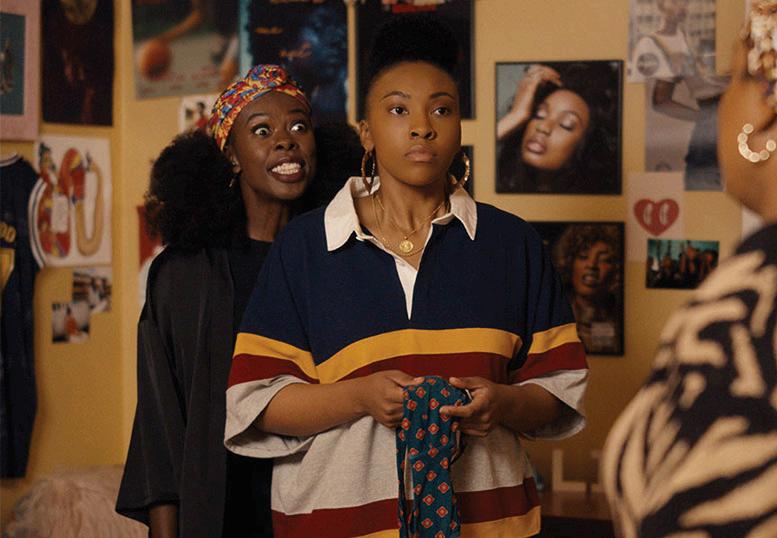
Throughout the movie, a mischievous narrator named “Black Attack” voiced by Hannan Younis, represents her inner dialogue, which is integrated in a way that felt so natural. It’s possible to suspend disbelief that Bria is a fictional character because the film presents something so close to our reality on the other side of the screen.
The mundane but comical moments in Bria’s life reflect the irresponsibility and raunchiness that make young adulthood what it is. Bria quietly regrets all the money spent on Tim Horton’s ice capps one moment, and she debates the politics of having sex on home turf or at a guy’s house the next.
I absolutely loved the cutaway segments that further delve into Bria’s subconscious. However, there was one particular moment that didn’t land well with me, nor with the rest of the audience: when Black Attack directly compares Bria’s hair being touched by a colleague and the lynching of Emmett Till. It’s clear that this was meant to be a joke, but rather than laughter, there was an uncomfortable hush over the TIFF audience. As a white woman, I cannot speak on how Black writers engaged with that moment in history or how members of the Black community interpreted the comparison, but there was a noticeable change in the atmosphere of the theatre. Luckily, the film did bounce back to other jokes fairly quickly, but an uneasy feeling did briefly linger.
“Relatable” is a word that’s been used to death by corporations trying to attract a young market — but Bria Mack Gets a Life has genuinely earned that title. What makes Bria
intriguing enough for longtime fans of the novel and original adaptation.
such an excellent character is that she is the perfect vessel for the audience’s projection. With an abundance of wit, she fights for academic validation, goes through romantic mishaps, and deals with the culture shock of the job market. Her character takes the shape of any number of young adult experiences, and we find the same deep camaraderie in her as in our closest friends. As a 20-year-old, it’s unbelievably comforting to see that I’m not falling behind. Everyone is fig-
uring it out as we go along, and the incompleteness of our journey is its beauty.
Bria is a symbol of this generation’s collective aspirations and fears while also feeling personal to the individual viewer. Like us, she is in a constant state of flux and growth. What comes next after the sharp dropoff after graduation? And what if you’re too tired for anything to be next?
Who is Bria Mack if not valedictorian? And who are we?
Dinner parties can never go right.
Or at least that’s the narrative South Korean directors have been keenly pushing. Korean cinema has produced movies that slowly build their characters’ downfall over dinner. Five years ago, it was Intimate Strangers by Lee Jae-gyu, in which the friendships of the star-studded cast began to fall apart over the course of a meal through ensuing smartphone notifications.
In director Hur Jin-ho’s recent film, which was selected for the Toronto International Film Festival’s Gala Presentations, a high-profile cast plays out a suspenseful drama, with two extravagant dinner parties serving as major turning points. Hur modeled the film after Herman Koch’s Dutch novel Het Diner (The Dinner), a book that has already been adapted thrice across Europe and America. Premiering precisely a decade after the Dutch adaptation screened at TIFF, A Normal Family’s record as the first Asian adaptation of The Dinner can be
A Normal Family invites the audience into the interwoven world of two brothers — Jaewan (Sul Kyung-gu) and Jae-gyu (Jang Donggun) — who desperately seek justifiable, moral grounds for their children’s crime in order to avoid their responsibility.
As an attorney, Jae-wan’s moral compass is established from the onset of the film: it’s nonexistent. Any airily unrepentant criminal with money can be painted as a remorseful, lowly citizen with the magic of Jae-wan’s expertise — even Jae-wan himself, when he kills a man and sends his daughter to the ER by crashing into them with his Maserati over an argument.
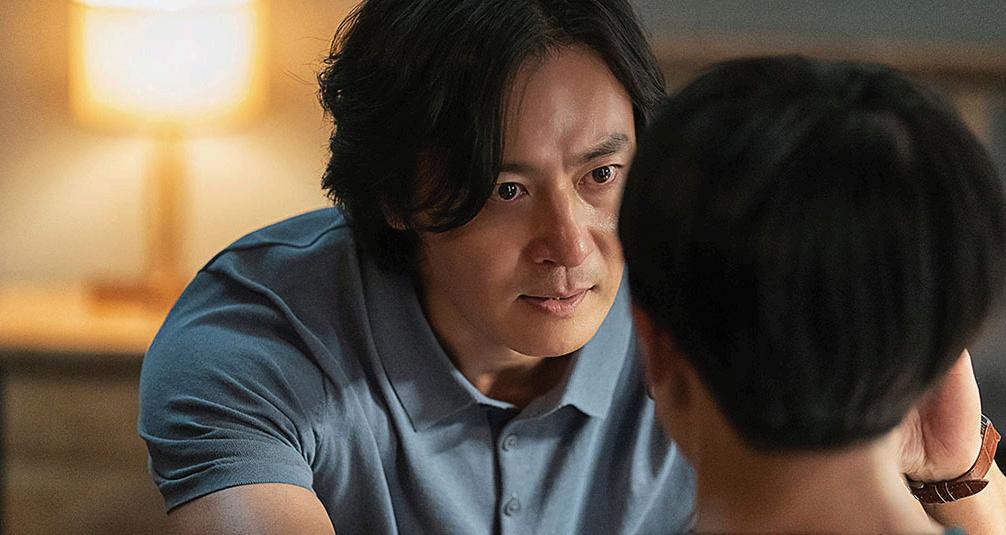
When this happens, the critically injured daughter is treated by Jae-wan’s brother, Jae-gyu, whose morals as a pediatrician directly contrast those of Jae-wan. Every child passing by the hallways of the hospital is fond of Jae-gyu, as he is of them, and his family is repeatedly reminded of his ethos, “정정 ” — play it fair and square.
While the families convene over a luxurious
dinner, their children are caught committing an awful crime. The brothers’ differing values in life and occupation lead to their children’s differing methods of coming forward as accomplices: Jae-wan’s daughter Hye-yoon (Hong Ye-ji) slyly demands legal advice from him for the case, while Jae-gyu’s son Si-ho (Kim Jung-chul) fearfully denies his crime as much as he can.
As the two couples dramatically open their eyes to their children’s shadows, the physical and psychological tension between the brothers’ wives, Yeon-kyung (Kim Hee-ae) and Ji-su (Claudia Kim), nearly overshadows the brothers’ performances due to the phenomenal work of both actresses. Yeon-kyung blindly accepts her son’s denial of his crime, but this does not come across as laughable, because Kim Heeae’s portrayal of love on screen always works like a charm. Her nuanced performance as a doctor’s wife, taking care of both her mother-inlaw and son, is done with her usual, theatrically compelling flair.
Despite this being her first Korean language film, Claudia Kim was very in touch with the inherently Korean cultural portrayal of the ricecake-bakery-employee-turned-attorney wife. While her character as a pilates aficionado is initially depicted as the mere shallow trophy wife of Jae-wan, her sensitivity becomes one of the driving forces of the plot.
While the movie drives the children’s case up to the point of climax during a second dinner, Hur meddles with our preconceived notions of the
two couples’ moral grounds in a fairly predictable but cinematically perturbing manner. Not only does he twist the audience’s perception of a ‘normal’ family, but he also toys with the couples’ comfortable and seemingly pristine lives.

What adds to the intrigue is that Hur’s deviations from Koch’s work, replacing elements of the story with distinctly Korean aspects of society and culture. The criminally sociopathic teenagers are notably graced with some depth in their characters through the portrayal of omnipresent Korean hagwon cram schools and severe bullying that occurs there. Such allusions seem to bring the upper-class families’ story down to earth, as if the couples are reminding the audiences: “We are the same because, we send our kids to hagwons, you send your kids to hagwons; we have issues with our kids, you have issues with your kids.”
The movie attempts to be less of a classic eat-the-rich movie about privilege and tries to question the audience about what they would do if the situation in the film happened to them. A truly normal family in South Korea, however, would not even have the privilege of the prolonged moral contemplation that the film’s couples had. Surprise: the average Korean daughter does not have a wealthy attorney to consult with on her crimes. Hur’s attempt to deviate from the typical anti-capitalist film while discussing capitalist privilege was trying to put too many eggs in a film roll basket: A Normal Family is redeemed only by its powerful performances.
The first Asian adaptation of the Dutch novel The Dinner is powerfully performer-driven
Eleanor Yuneun Park
Comment EditorThe Korean film is a tense portrait of a high class family. COURTESY OF TIFF
 Alex Mooney Varsity Contributor
Alex Mooney Varsity Contributor
An early image presented in Kore-eda Hirokazu’s Monster –– one that it returns to each time its obsessively brocaded timeline ruptures and resets –– is the spectacle of a burning highrise. Crowds converge on the surrounding area to gawk and rubberneck at the computer-generated blaze as wall after wall crashes away to reveal more of the charred scaffolding beneath.
Likely meant as some kind of subtle comment on how sensational events can obscure hidden truths, the sequence instead doubles — and later triples — as a self-tattle on the shaky, skeletal authenticity that sensational movies are built upon.
The film — the first original film Kore-eda directed but had no part in writing since his 1995 breakout Maborosi — has cribbed its threepart structure from Kurosawa Akira’s highly influential Rashomon (1954), which radically and comically depicts the conflicting points of view of its central players’ experience of a singular event.
Rashomon is playful and biting, laden with strategic contradictions that shed an unflattering light on the fallibility of human memory and integrity. On the other hand, Monster attempts to flip the script, setting up a trisected quasi-mystery structure so that we assume the worst of almost everyone involved before peeling back the layers to reveal their humanity. Though it’s an admirable pursuit in theory, in practice, the film’s leering, surgical details and its sensitive subject matter of LGBTQ+ experience converge to ultimately betray screenwriter Sakamoto Yuji’s ostensibly noble project.
Fifth-grader Minato Mugino (Kurokawa Soya) lives alone with his mother Saori (Ando Sakura), who begins to suspect that her son is being subjected to violence by his teacher, Mr. Hori (Nagayama Eita). We first follow her as she seeks accountability from the school’s faculty, who are blatantly and cartoonishly evasive. We then follow Mr. Hori, and finally Minato himself.
The first two sections are perfused with confusion and frustration, while the final stretch is designed to dot every ‘i,’ cross every ‘t,’ and tie up the whole affair in a neat, optimistic package. What first plays out as a cruel, oblique tale of homophobia made deliberately systemic is transformed into a narrative web of well-meaning cyphers puppeteered by a malevolent social force. The whole film ultimately merges towards its climax of a storm flood that Sakamoto hoped could wipe the film’s slate clean.
On a related note, there is unfortunately another film that Monster has accidentally patterned itself after, and it’s Paul Haggis’ Best-Picture-winning network narrative Crash (2004), one of the most wrong-headed movies to ever grace the silver screen. Admittedly, it’s a harsh comparison, but Kore-eda’s film nonetheless echoes its forebearer’s flawed and contrived approach to addressing identityrelated social issues.
In Crash , as opposed to a tangible, enforced system of evil carried out by conscious, levelheaded people at all levels of society, racism is rendered as an external, random tangle of humanity’s worst instincts finding expression in helpless individuals –– and Haggis bends over backwards to showcase it as such.
Monster , a similar contortionist act, flips yet another script here. It takes the personal out entirely in favour of the “system” explanation,
with a system that mostly floats around the periphery as a formless rhetorical crutch while the plot doubles back on itself in punishing detail. Sakamoto’s attempt at social commentary isn’t as insulting or harmful as Haggis’ but still comes across as hackwork.
Enough signposts of gendered social constructs have been planted throughout the film to implicate Mr. Hori — and to a lesser extent, Minato’s mother — in an abstract system of conformity and indirect homophobia, but there are few enough to still leave his — and our — conscience clear. A throwaway scene in which Minato fails to hold up his classmates in a human pyramid, prompting a joke-y, tossed-off “You call yourself a man?” from his teacher, succinctly distills the film’s dubious attitude towards Mr. Hori into the span of a couple seconds: he is at times unthinking but essentially good-hearted.
Despite having won the Queer Palm at Cannes, Monster is not interested in examining how and why young boys are tormented by their peers before they even know they’re gay, nor is it equipped to explore the reasons why
this bullying has time and again been allowed to occur. Instead, it’s much more interested in using these boys as helpless, martyred canvases onto which society’s broader issues in communication can be implicitly mapped. Its mercifully hopeful ending does not excuse how the film cruelly hints at the possibility of a child’s assault or death by suicide to its audience throughout the runtime, nor do its sparse but expressive moments of intimacy entirely detract from its plodding, incurious grasp on the complexities of human behaviour.
By the end of Monster , I was left not with the simmering, wounded hostility I’d been nursing for nearly two hours but with a dejected sense of waste: a waste of the committed cast and crew, of Sakamoto Ryuichi’s final film score — which goes a long way toward selling so many dishonest moments — and especially of its director’s talents. Kore-eda’s facility with young actors, his thoughtful curation of sound, and his intuitive grasp of image — even if occasionally a little stiff and academic — animate this classed-up after-school special in ways it doesn’t deserve.
Four years after premiering the Academy Award-winning film Jojo Rabbit at the Toronto International Film Festival, Taika Waititi returned to the festival this year to premiere his newest film, Next Goal Wins
Inspired by true events depicted in a 2014 documentary of the same name, Next Goal Wins follows Thomas Rongen (Michael Fassbender), a disgraced Dutch-American soccer coach, as he is hired to coach the American Samoa national soccer team. However, Ron-

gen’s assigned task isn’t to coach the team to their first-ever game win — he has to help them score their third-ever goal.
An underdog story is a typical trope in sports films, and Next Goal Wins is no different. Nevertheless, while predictable, Waititi still succeeds in delivering a strong underdog story. The goofy training sequences throughout the first half of the film make it clear that the American Samoan team is just not good. This is a team that is still reeling from the legacy of a humiliating, albeit historic, 31–0 loss to Australia in 2001 — the largest-ever defeat in an international soccer match. Despite their lack
of success, though, the Samoan team is still easy to root for; they’re all likeable characters, imbibed with Waititi’s quirky and rather dry sense of humour.
While Waititi’s humour is a signature part of his filmmaking, it seemed as though some scenes in Next Goal Wins are purposefully extended just to include jokes. While there are jokes in the movie that certainly shine — Samoan actor Oscar Kightley as Tavita, the manager of the Football Federation of American Samoa, is a comedic standout — there are also several jokes that don’t. Waititi steps in front of the camera and takes on an acting role in this film as a priest, but his character is easily the most insufferable in the entire film.
In his previous films, like Boy and The Hunt for the Wilderpeople, Waititi’s humour was more effective because he struck a balance with the more serious themes each film explored. However, in Next Goal Wins, the pendulum is all over the place, leaving little space for the film’s already limited emotional moments. Plot points move too quickly, and Rongen’s place as an outsider in American Samoa is brushed aside within minutes.
Every character on the team is also infantilized and goofy, and while that works for comedic purposes, it portrays the American Samoan characters in an oversimplified light. This is a particular problem since Pacific Islanders have been historically underrepresented and misrepresented in the media. Building on that issue further, even though nearly the whole film takes place in American Samoa, we learn little about Samoan culture or about characters’ daily life.
Perhaps the most problematic aspect of Next Goal Wins is how Waititi includes Jaiyah Saelua in the narrative. Portrayed by nonbinary actor Kaimana, Saelua is fa’afafine — a third gender
in Samoan society — and the first transgender woman to compete in a World Cup qualifier.
While Saelua’s identity is respected in Samoa, Rongen does not understand or accept her identity. He deadnames her, uses the wrong pronouns, and consistently belittles her during training sessions. When she finally stands up to him, Saelua is the one who has to come back and apologize for her behaviour. Later in the film, during a climatic moment centred around Saelua’s identity, Rongen delivers a pep talk that immediately seems to resolve any problems between them. It’s a scene that has the potential to be inspiring and introspective but is just disappointing. The transphobia also seems unnecessary, considering the real Rongen was never transphobic.
Ultimately, Saelua seems to exist solely to help develop Rongen’s character. Considering current and ongoing attempts by major sporting organizations to exclude transgender people in sports, Waititi could have written Saelua’s character better.
Despite this, Rongen is the only character gifted with a clear arc and conflict — specifically, his journey to adapt to his new circumstances and realize that there is more to life than soccer. In American Samoa, soccer is just a game, a view that consistently conflicts with Rongen’s view of the sport. Nevertheless, this conflict directly collides with the film’s main plot — if soccer is not a serious sport in American Samoa, then why are Tavita and the rest of the team so desperate to score a goal?
While it is a fun movie, Next Goal Wins misses the mark — or the net? — with a lot of the themes it attempts to discuss. Ultimately, Waititi does deliver a message with Next Goal Wins — soccer is just a game, so just be happy. Unfortunately, it’s a message that will leave many sports fans rolling their eyes.
On September 11, Pain Hustlers, directed by David Yates and starring Emily Blunt and Chris Evans, premiered at the Toronto International Film Festival. The story, which is adapted from Evan Hughes’ book Pain Hustlers: Crime and Punishment at an Opioid Startup, is inspired by the role real-life pharmaceutical company Insys played in the opioid crisis.
Liza Drake (Emily Blunt) is a single mom struggling to make ends meet after losing her job at a strip club. When she meets Pete Brenner (Chris Evans) by chance, she manages to land a job at Zanna Pharmaceuticals, a shady, failing startup peddling a fentanyl-based pain medication. She helps develop the startup into one of the world’s most successful pharma companies, but the human cost of her ac
Pain Hustlers appears as a big change of pace for writer Wells Tower, for whom Pain Hustlers marks his screenwriting debut and for Yates, who spent the last 16 years directing the Harry Potter and Fantastic Beasts movies. Yates, however, has actually worked on more realist projects dealing with social justice topics in the past. He has directed two television series, State of Play (2003) and Sex Traffic (2004), both investigative political thrillers. In an interview with The Varsity, Yates spoke to the importance of interviewing victims of the opioid crisis and their families to inform the film, a research process he undertook with Blunt.
Both Blunt and Evans’ roles are also rather unconventional in their repertoire. Evans — who is well-known for his role as Captain America — has dabbled in seedy characters such as Knives Out’s Hugh Ransom Drysdale before, but after his iconic run as Marvel’s golden boy, morally gray characters
Meanwhile, Yates and Blunt embraced the chance to include a seedy woman character for once: “You know what, David?” Blunt reportedly said to Yates in an interview with Comic Book Resources. “I’m so sick of seeing leading female characters who have to be so honorable and straightforward.”
Stylistically, it’s obvious who Pain Hustlers draws inspiration from: its quirky freezeframes, flash-backs and flash-forwards, and voice-over explanations of technical terms will ring major bells for anyone familiar with Adam McKay’s 2015 The Big Short . The film is interspersed with black-and-white confessionals from its characters, who are presumably being interviewed for a documentary after the fact; these moments of characters directly addressing the camera to explain their past actions also conjure faint memories of Margot Robbie explaining economics in a bathtub. The score is pounding and sharply punctuates the several montages of Drake and Brenner doing what they presumably do best: scamming people. The film uses slow motion both for dramatic effect and, early on in the film, as an occasional replacement for freeze-frames while narration plays.
stylistic quirks end up more distracting than anything else. While Blunt truly puts her all into her perPain
’s similarities to The Big Short start and end with Yates’ McKay-like stylings. Tower’s amateurism at screenwriting shows; he doesn’t seem to know how to make characters express that they feel bad without having them say, out loud, “I feel bad,”
or how to build romantic tension between two characters without having one of them ask to see the other’s tits out of nowhere. In fiction, these things can be developed naturally in narration; while Tower seemingly recognizes that it would be a mistake to develop the most important moments of the movie in voice-over, his dialogue simply isn’t strong enough to make the development of his relationships an interesting watch.
While Evans also does his best, he is given little to work with. Though the movie sometimes emphasizes how as Brenner begins to humanize Drake, it complicates their transactional relationship, this doesn’t actually become a major part of the movie. In fact, Evans is barely in most of the major scenes in Pain Hustlers
The film’s synopsis promising something it doesn’t deliver is a recurring theme here; while Drake’s daughter Phoebe (Chloe Coleman) has epilepsy, it’s only made relevant in a few niche segments of the plot; while Drake does rise to the top of the fentanyl-peddling business, her success is only ever shown to be a product of luck, rather than actual skill; the list goes on.
Yates and Tower consistently confuse putting something in their movie with having a movie that’s about that thing. Everything listed in the film’s trailer and synopsis technically happens in the movie, but the plot development consistently feels like a clunky obligation. Tower and Yates rush through scenes to reach the relief of the next montage or straight-forward confessional, where they can just have their characters tell you what they’re thinking.
Overall, Pain Hustlers clearly knows what it wants to be: a sharp, fun satire of what damaged people with messed-up families will do for money. But Yates and Tower don’t seem to know how to get there in any respect. As Pain Hustlers joins the growing ranks of satirical fiction about capitalism and morally dubious rich people — such as Glass Onion , The Menu , Infinity Pool Succession — it’s by far one of the weakest and most timid of the genre.
The film was a disappointing attempt at McKay-style satire.
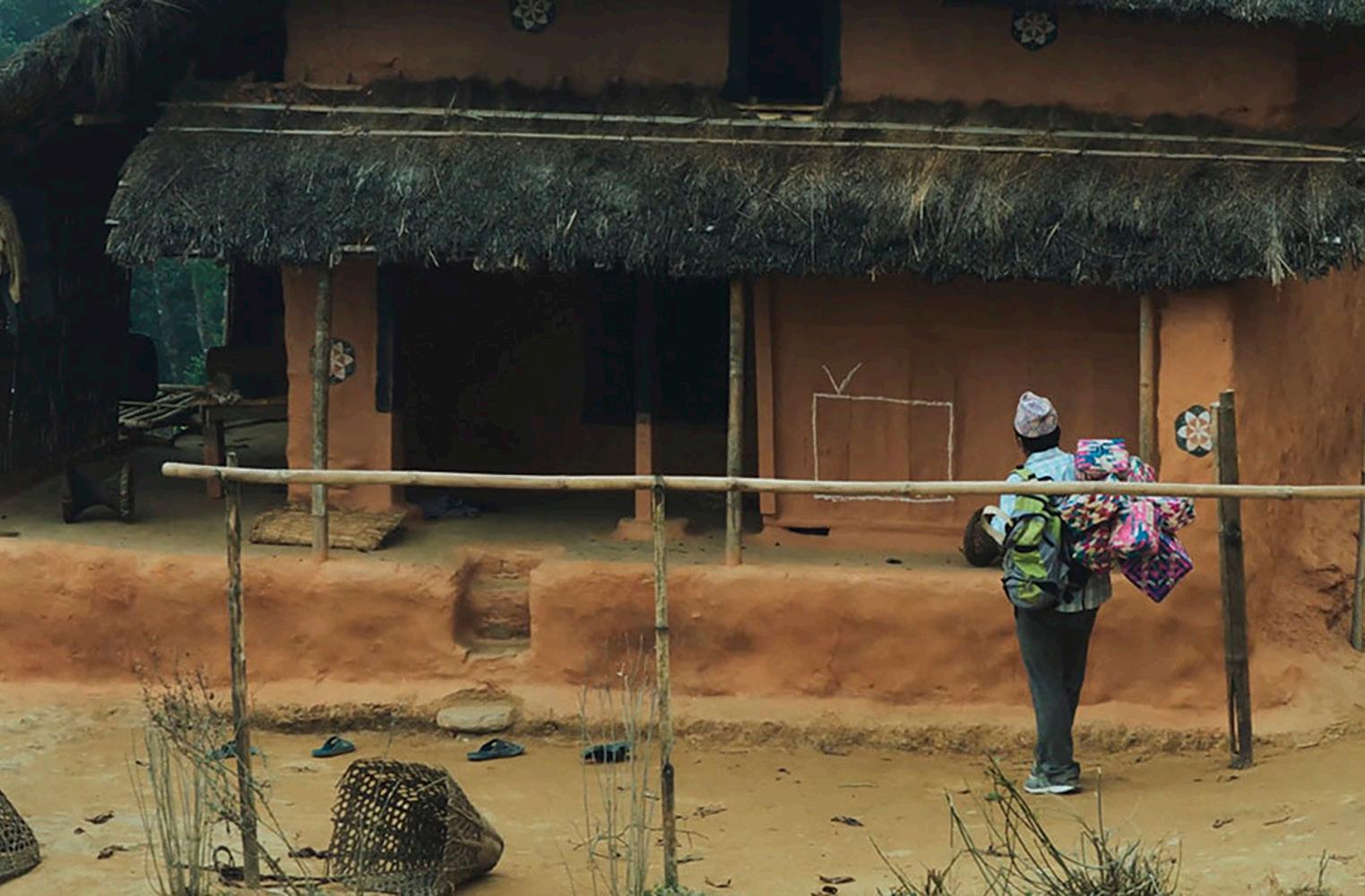
selling prohibited liquor, to make his son’s dream come true.
A rickety bus on a precarious road wobbles along, bringing hope and novelty to the rural village inhabited by a Rai community. The residents of this Nepalese mountain village welcome the town bus like the Garuda, the mount of Lord Vishnu himself; they anoint the travellers with marigold garlands and grace the rear-view mirror of the bus with the same courtesy. But is modernity a false god?
Nabin Subba’s A Road to A Village portrays the impact of a road built in the village of Maila, a basket weaver, and his family. Maila’s basket-weaving skills are rendered useless for commerce when the bus begins to bring the wares of the city — plastic tarps in place of bamboo mats, plastic seats in place of woven ones — which leaves him urgently scrambling for a source of income to sustain his family.
His son, Bindrey, the apple of his father’s eye, is an imaginative but demanding child whose deepest wish is to have a television set, and it is Maila’s deepest wish to fulfill his son’s wishes. But a television set comes at a price much heavier than Maila could anticipate. We watch the basket weaver traverse this new modern terrain, engaging in odd jobs, like
The cinematography in Road to a Village compellingly captures the vastness of Nepal’s rocky peaks compared to the minutiae of its human inhabitants and their relations. We see Maila and Bindrey on a hilltop overlooking the mountain range: two lone figures, father and son, shrunk in the face of the looming hills. They watch the coiling path that brought the false god of technology slither into the urban jungle of the city of Dharan — mapping the dreary path of their lives, and of ‘modernity.’
There is a recurring image of characters being shown in reflections: in water, glasses, and rearview mirrors. As Bindrey points out, these reflections make the villagers look like the “people inside the television.” The shot of Maila looking at himself in a large pond with a satellite dish lurking in the background is disturbed by a ripple in the pool, much like how the reality of his life is interrupted by the plasticity of the Coca-Cola commercials and swimsuit models on television.
The film begins with a good balance between the lightness of the father-son bond and the dreariness of their uncertain future, but near the end, the viewer finds themself jolted unexpectedly by a heartbreaking twist. Right after this twist, the film could have transitioned into Maila and his wife leaving the village. Instead, the emotional impact of the ending is slightly watered down by the scenes that transpire after.

Unfortunately, the film score sticks out
film is
sorely, especially in the more emotionally charged scenes. As Maila weeps at the tragic turn their life has taken, the dramatic music pulses and quickens, thumping louder than the heart of the film itself. In the film’s supposedly saddest moments, the score hushes the viewer’s sense of tragedy. After all, what could be more heart-wrenching than Maila’s howls echoing through the hills?
Actress Pushapti Rai captures the essence of a mother so well: she is tough with her love because she wants the best for her son. However, her powerful performance is imbued with a sense of melodrama, and it feels incongruous with the more realistic tone of the film.
Bindrey is an absolute joy; his precocious smile and luminous presence make almost every scene with him more joyful. In the scene where Bindrey runs after the bus calling for his father, his piteous cries sing a melody much more powerful than the musical score. It was a delight to watch a young talent deliver a comedic and poignant performance.
Director Subba excels in depicting the lightheartedness of family fights. Take, for instance, Bindrey’s fake sniffles at his mother’s taunt, just to have his father console him with CocaCola. Subba’s
theatre background is also evident. In a scene where Bindrey mirthfully asks his parents as to why they are so boring, if not to provide him money to procure Coca-Cola, he positions Bindrey on a tall rock with his hand resting on his knee, resembling a king overlooking the peasants — his parents — working on the fields.
Road to a Village left me excited to see cinema reflecting different stories, such as the stories reflected in the silver bangles that Maila’s wife hopes to sell, in the pool reflecting Maila’s dreams, and in the eyeglasses that Bindrey engineers out of camera film.
I hope that the future of cinema leads us down more roads yet untravelled.

A rural village encounters ‘modernity’ in this heart-wrenching and heart-warming story
Shreya Dhar Varsity Contributor
In the early summer of 2019, there was a stir among Koreans around the world who kept in touch with their family and friends back home. Supposedly, a new film by renowned director Bong Joon-ho had just been released, and it was the talk of the entire country.
The title itself was compelling: “Gi-saengchoong” ( ). Any Korean-speaking person would understand what the word meant, but no one could have guessed what the movie would entail — both in itself and in history.
Months later, the movie was screened at the Toronto International Film Festival (TIFF) in September 2019 under the name Parasite . From that moment, everything became history. The movie not only became Bong’s first movie to gross over 100 million USD across the world, but it was also the first Korean film to win the highest prize — the Palme d’Or — at the 2019 Cannes Film Festival, and the first non-English language film to be named best picture at the 2020 Oscars. Every media report on an additional Oscar win for Parasite — including best director, best original screenplay, and best international feature film — set Koreans everywhere in a frenzy.
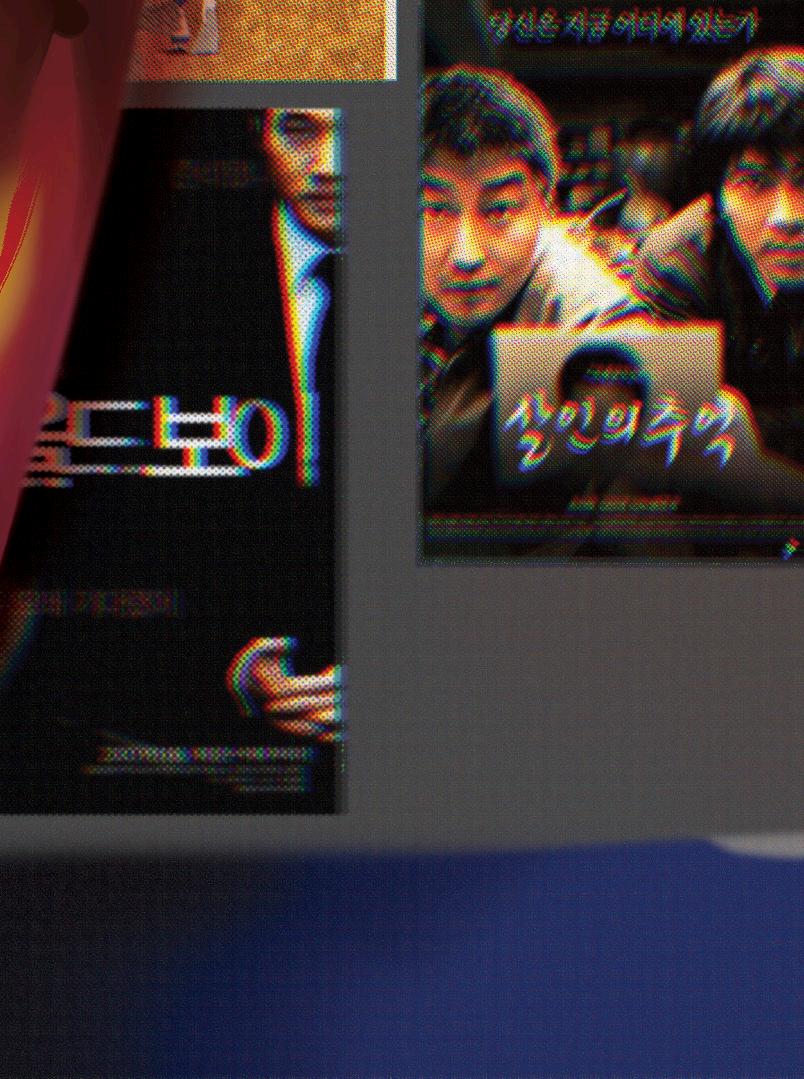
As a 17-year-old Korean student studying in Canada, it was a transformative moment to watch a film in my language in a Canadian theatre — knowing that everyone in the fully-packed cinema was cognizant of the movie’s cultural significance. Parasite was not simply a film grouped into a bigger category, together with other Asian countries with older cultural footprints in North America — it was distinctly Korean. The story’s background was filled with Korean neighbourhoods, Korean food, and even Korean accents and inside jokes even when characters were speaking English.
Fast forward to 2023, Asian media has generally become more accessible in the English-speaking world, and Hollywood is also increasingly casting more Asian actors. We now see beyond Asian actors getting typecast as nerdy STEM kids or ‘exotic’ girls who don’t speak English. The debate on defining the accurate reflection of Asian people in media can go on and on — but representation matters, and I am glad that the younger generation of North American Asians is growing up with people who look like them on the screen, encapsulating authentic, non-stereotypical human lives.
As part of a broader geographical group, the Asian influence and dominance over the arts today is not surprising when considering the combined population and economic power of Asian states. In addition to an extraordinary and longstanding history of arts in every respective country, there is a demand everywhere to satiate Asian palates.
However, people may not realize that it is
nothing short of a miracle that South Korea has become a distinctive country among others in terms of economic, political, and cultural relevance. In the face of successful Korean films, Netflix shows, and K-pop groups, it seems like it’s only been a while since we were merely considered as the tiny — and divided — country stuck under the formidable North Korea and between the geographically and economically powerful China and Japan.
But as a student who has lived through the phase of a painfully invisible Korea to today’s dynamically exponential prominence of Korean culture, I find it important for others to understand why our cultural establishment is miraculous, and therefore distinct from other countries.
Simultaneously, there is a pressing need for us to pay attention to how past and present governments are tampering with Korea’s freedom of expression in art. Current and past conservative governments have made worrying encroachments on censorship and surveillance of art. If this persists, we risk creating and becoming a monotonous cultural entity with no distinction from others.
From rags to invisibility
Following Korea’s liberation from Japanese colonization in 1945, the Korean War erupted when the North invaded the South in 1950. The war took more than 2.5 million lives and only ended through an armistice agreement in 1953, leaving our nation still divided in two.
South Korea’s development from a wartorn country in poverty post-armistice to its current state happened over a mere 70 years, and I have always had immense pride in our country’s unprecedented ability to build from the ground up. In the simplest economic terms, we are a rare country that has gone from having a gross national income per capita of 57 USD in 1953 to 32,661 USD in 2022.
While I was raised in Korea to have profound respect for my country, I quickly realized that how others perceived us had not yet caught up to how we viewed ourselves.
My first several months in Canada left me with comments that remained with me the longest. Any mention of my country led to the ritualistic “North or South? Just kidding,” and wildly exaggerated impersonations of Kim Jong Un or dog eating. If I wasn’t met with those offensively unoriginal comments, there would be milder, awkwardly offensive remarks like, “I’ve always wanted to visit Japan,” or “Ni hao, konnichiwa,” that would always append my introductions.
Following this earthshaking realization and a great deal of blaming my naiveté, I pushed myself to let go of my identity in many ways. I refused to speak my language in public or discuss where I was from. I was perfectly antiseptic and thus blended in well.
The most tragic moments of this process
were when I met Korean-Canadian peers who had clearly gone through an identical life trajectory earlier than I had and refused to identify with me. We avoided discussions of our country, let alone speaking in our language. We were not from a geographically formidable country nor a culturally significant one. Our country was unlike neighbouring countries and therefore did not matter, but was close enough to them that we were clumped together.
Separation of colonizer and state
Then came Parasite , Squid Game , BTS, and the series of Korean films, shows, and artists that firmly crystallized the Korean identity.
While the success of our culture is part of the overarching success of Asian culture, it’s important that Korea and its arts are not only perceived but clearly understood as a distinct entity. From my perspective, this is part of a justified demand to be seen in separate terms from the country that used to colonize us.
Japan’s colonial rule over Korea from 1910 to 1945 involved the ethnic cleansing of at least 6,000 Koreans through the Kantō Massacre, the killing of over 7,000 peaceful protestors demanding independence at the March First Movement, the burning of over 200,000 Korean historical documents, the forced abuse of up to 200,000 Korean women and girls as ‘comfort women’ by
Japanese troops, and the coercion of at least 1.2 million Koreans into forced labour in mines, factories, and airfields and eventual death under barbaric conditions.
Japan’s attempts to physically and culturally erase Koreans during its years of colonization are parts of our history that no amount of rapid economic development can force us to speed past. When our people have been massacred and our history has been scraped off by another country, it is vital for us to establish our individual cultural identity without being conflated with the colonizer.
Writers have frequently criticized the limited scope of the term “Asian American,” and its inadequate representation of the wide-ranging racialized group. As the term is sometimes seen to exclusively encompass East Asians, it therefore contributes to income, healthcare, and economic disparities between Asian diaspora communities. As a result, the discourse over it is nuanced, but I find the fundamental logic of this argument congruous with mine: no country should be clustered or conflated with another because what constitutes each nation’s identity is delicately distinct from that of any other.
Parasite : Before and after, in cinema and beyond Parasite in 2019 was a monumental turning point in the history of Korea — conveniently, on the 100th year of Korean

cinema, a century after the 1919 screening of our first film, Righteous Revenge . While Bong’s cinematic commentary on Korea’s social stratification and class inequality marked the moment Korean films became mainstream in the English-speaking world, the 100 years of our cinema have birthed a plethora of esteemed cinematographers.
My personal favourite director is Lee Chang-dong, whose films like Peppermint Candy , Poetry, and Burning have transformed how I digest movies and life. The sentiment is evidently transnational, as you can find a large poster of Burning on the second floor of TIFF Bell Lightbox. I admire Lee ardently for how in touch he is with what people live to burn for — the youth and the elderly, regardless of time. His understanding and storytelling about each generation he writes about transcends the generational divide, and that is generationally rare.
In the last several decades, directors like Park Chan-wook have also achieved widespread acclaim. Park made his name via his Vengeance trilogy — Sympathy for Mr. Vengeance , Oldboy , and Lady Vengeance — and his later works like The Handmaiden and the recent Decision to Leave . His early work commonly depicted the story arc of hatred causing violence and revenge bringing further revenge rather than relief. Park Chan-wook’s main characters are multidimensionally anti-heroic, whose actions are cruel but motives are not.
Similar to Bong, a major tool Park uses in his films is criticism of our country’s social and judicial system. In recent years, he has increasingly portrayed the generally underrepresented woman’s gaze by collaborating with screenwriter Chung Seokyung.
Bong’s work has actually differed greatly from that of Park by being less grotesque. With actor Song Kang-ho as his frequent on-screen persona, Bong has actively packed in his message on how the world is a system in which the poor and the rich are constantly parasites to each other: wisdom that echoes throughout his renowned films The Host , Snowpiercer of Murder
These Korean masters of cinema all have a spot on any list of the most influential directors in the world. However, these three directors have been disproportionately affected by the Conservative Party’s recent reigns. Over the tenure of two presidents
between 2008 and 2017, the Conservative Korean government introduced a oncediscreet artist blacklist, which listed all three directors, among many others.
During their administrative periods, former presidents Lee Myung-bak and Park Geun-hye kept an expansive list of cultural figures that were deemed ‘leftist’ or antigovernment. Lee Myung-bak’s list consisted of 82 artists who were then put under government surveillance, but Park Geunhye dramatically expanded the list and intensified the degree of surveillance over the industry. The 2015 version of her list had more than 9,000 cultural figures logged, and it barred them from government-controlled support programs.
Among the thousands of people were Park Chan-wook, Bong and his stand-in Song, and Lee Chang-dong. Park Chanwook and Bong had been long-known for their support and membership in the thenDemocratic Labor Party of Korea, while Lee had served as the Minister of Culture and Tourism of South Korea under the liberal president Roh Moo-hyun.

But establishing one’s support for a nonConservative political party was not even the set threshold for making the list in this Orwellian system. Anyone and everyone was added to the list if they were ‘suspected’ of supporting Park Geun-hye’s political rivals,
The future of Korean cinema is dark in the government’s hands South Korea has had former Prosecutor General Yoon Suk-yeol as Conservative president since 2022, and he has appointed Yoo In-chon as special advisor for culture and sports. Yoo served as the Minister of Culture and Tourism under Lee Myung-bak, the Conservative president who originated the blacklist. Ever since the current president stepped into power, artists have been scrambling to evade censorship and protect free speech in art. Under Yoon’s limited administrative period, however, things are looking dire. The administration censored a documentary on a lesser-known massacre in Korea by banning the EBS (Educational Broadcasting System) channel from showing it at its International Documentary Festival. It halted the distribution of a composer’s translation of Beethoven’s Symphony No. 9, which he translated using the word “freedom.” Over the last year, it has further attempted to limit or censor a diverse list of other exhibitions and performances.
I believe that being complacent under governments that surveil and censor art will inevitably lead to a more bland Korean identity and make it easier to assimilate into other cultures that are different from ours in history and identity. This is a
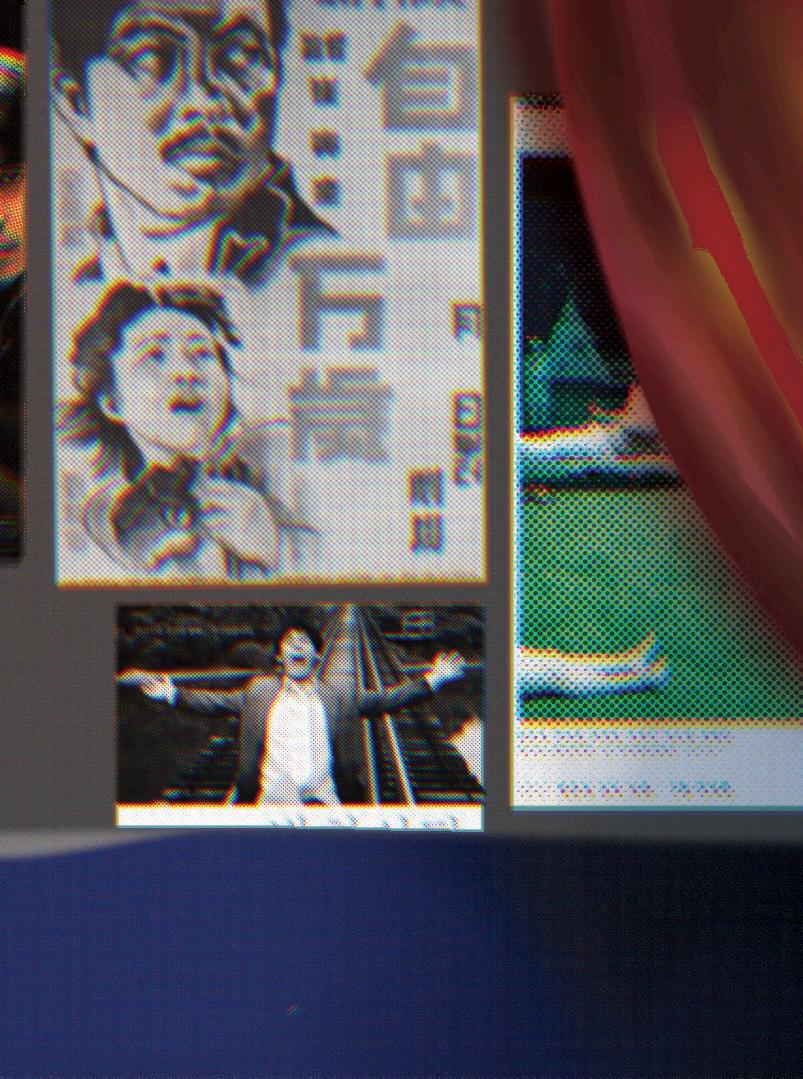
repeated in generations that succeed me — but the possibility is especially concerning because, as of now, we are stagnant.

It is not uncommon to hear critics in Korea expressing their concern over how the future beyond Bong Joon-ho and Park Chan-wook looks bleak. Even when looking at the five Korean directors featuring their films at TIFF this year — Hur Jin-ho, Ryu Seung-wan, Jason Yu, Kim Taeyang, and Um Tae-hwa — we can tell how most of them do not have the filmography that translates to ticket power. The influence is still in the hands of Bong and Park.
The films that have pushed us to examine our society through a critical lens from history have grown to establish South Korea as a prominent presence in the global arts scene. With films like Parasite bringing in 86 billion won in revenue and groups like BTS creating an economic effect of nearly 1.5 billion USD, South Korea is a modern prototype of an economy and society fueled by arts and culture.
But I am afraid of what our country’s future will bring to artists and younger generations. We’ve come so far to stand alone as a country — economically, socially, and culturally — because we have been able to stand on our distinct history of being torn by war, colonized, and polarized. No matter how devastating it is, we
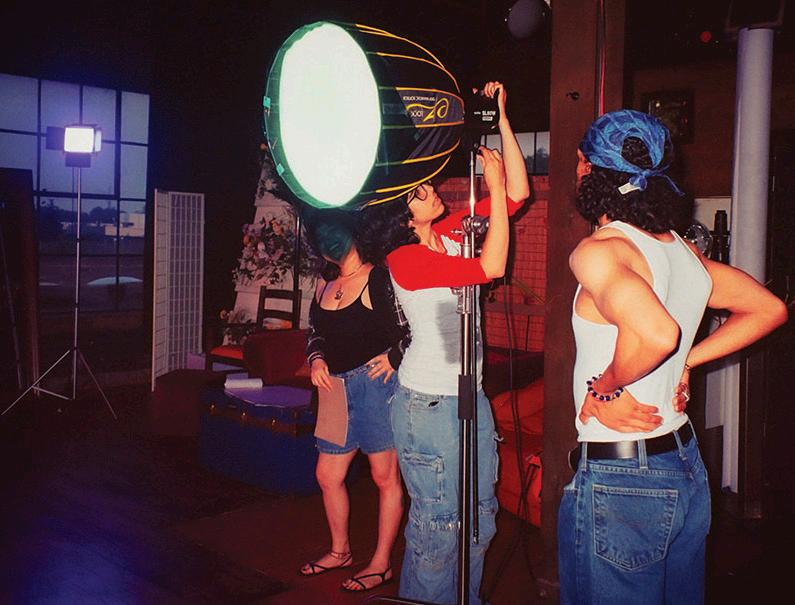
All it takes to produce a film is a handful of acquaintances, some cheaply rented cameras, a healthy supply of networking skills, and some cash scraped together from odd jobs.
At least, that’s what has been true for Mokshali Raman, a third-year English and classics major.
The inspiration for Raman’s multi-part short film project Slant Rhyme came to her from the poetry portfolio she had created during a series of creative writing courses. “I wanted to make a movie. And I was like, what better time to do these things than in the summer?” she said in an interview with The Varsity
Then came the matters of cast and crew, equipment, location, and set design. Without a filmmaking portfolio or initial grant funding, Raman had to depend on her people skills. She put out a call for camera operators, actors, and dancers on her Instagram story. She walked into a Jimmy’s Coffee and asked the manager for permission to film a scene there — which
they granted, in exchange for Raman taking some pictures for the coffee shop’s social media.
She then rented her camera equipment from the Hart House Film Board (HHFB), an organization run out of Hart House that offers low-cost equipment rentals and filmmaking classes, hosts screening parties, and puts on filmmaking competitions. Compared to private equipment rental services, Raman noted that the HHFB’s rates are drastically cheaper. “Of course, [selection is] slightly more limited. But you don’t really need that much equipment to film something. You just need good lighting. And, honestly, just your phone,” she added.
Favours for friends
The HHFB has also rented out equipment to Kennedy Kao, a former U of T student whose short film Danica’s Mom won the grand prize at the Montreal Festival du Nouveau Cinéma in 2020. Kao has been working on independent film projects ever since and is now a cotechnical director of the HHFB.

But Kao got his start in a now-disbanded U of T club of aspiring filmmakers who called themselves Rain Dance on Campus. One of the people Kao met in the club would eventually become his close friend and served as director of photography for Danica’s Mom. Kao was also able to use his friend’s connections with other film students to recruit even more crew members.
In an interview with The Varsity, Kao recalled that his budget for the film was around $4,000; the money came “pretty much from my own bank account,” he said. “I had a very regimented lifestyle. So I would just go to school, I would work, and I would save up money just to make films.”
However, the lean budget was not enough to pay everyone on the team, Kao explained. Friends on the crew, like Kao’s director of photography, agreed to work on the film partially as a favour to a close friend. “Crew members were also looking to get experience because they were just starting out in filmmaking,” Kao noted.
Getting to know fellow hopefuls in the industry is crucial, Raman emphasized. Like Kao, providing people the opportunity to gain experience and portfolio items drew fellow students and other acquaintances to her project.
“Lots of people want to be influencers or bloggers. And while they can get aesthetic shots, they don’t have access to as much cool equipment,” Raman explained.
But finding those people meant seeking out events around Toronto where people interested in film production are likely to be found. Raman pointed to her volunteering work at Fashion Art Toronto, conferences and lectures on filmmaking promoted by the Toronto Film School’s newsletter, and small concerts as ways to meet people.
For Raman, building those connections also helped her to find clients for odd jobs in photography and film. For instance, she recently filmed a concert for an emerging musician, which then helped her finance her own projects.
Even bumping into people in cafes and on the sidewalk can be an opportunity to make a connection, Raman said. “People will stop and be like, where did you get that dress from? Then you talk to them for five minutes and you’re like, ‘Oh, so you’re a musician’… all of those contacts are really useful.”
Further down the line, Kao explained that funding from a couple of grant organizations has allowed his filmmaking projects to grow. Danica’s Mom went on to win the Best Student Prize at the Montreal Festival du Nouveau Cinéma, which got Kao a $2,000 cash prize from Netflix.
“I was able to [use it] for my next short film and then kind of get the ball rolling from there,” Kao explained.
Now, Kao has secured around $17,000 in grant funding for his current project, Good Boy — “quite a jump from $4,000,” as he noted. But working with grant money also means tightening the production’s accounting, Kao explained.
“Grant organizations are looking for [more] organization, because you have to submit your film and your production plan to them after you finish the production… whereas before I would sort of just handle the finances on my own and not write anything down or organize things properly,” Kao said.
But the higher budget also means that Kao is able to pay more of the team working with him on the film, even if they are close friends.
As for Raman, she is actively working on the later segments of her film project. She’s currently set to screen the first part at a youth centre in Scarborough.
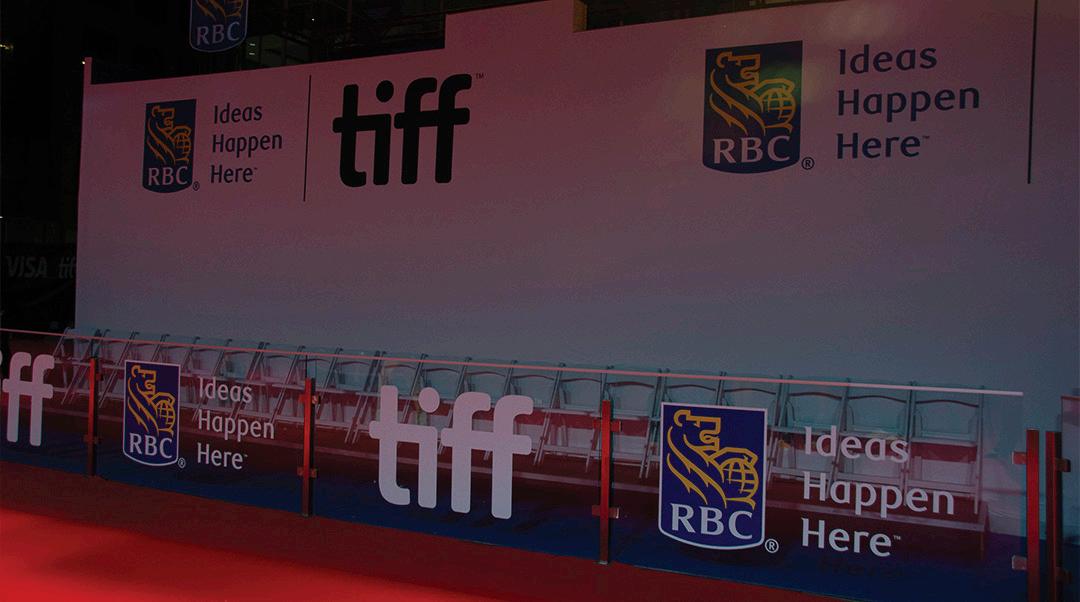
Hollywood celebrities, including Mark Ruffalo, Rachel McAdams, Edward Norton, and Joaquin Phoenix, are the latest among 300-plus actors and filmmakers to sign an open letter addressed to Cameron Bailey, the CEO of the Toronto International Film Festival (TIFF), urging him to terminate the festival’s longtime sponsorship deal with the Royal Bank of Canada (RBC) in 2024.
Published on September 6, filmmakers and activists Elza Kephart and Jose Luis Gutierrez wrote the letter.
It calls out RBC as a “world-leading enabler of fossil fuel extraction,” complicit in perpetuating violence against “Indigenous and BIPOC organizations and nations” through its “indiscriminate enabling of projects on their lands.”
In 2022, RBC’s fossil fuel investments made it the biggest investor in climate destruction in the world. The bank approved more than 42 billion USD in fossil fuel development in 2022 alone — and 253.9 billion USD since 2016.
In 2022, RBC sponsored the construction of Coastal Gaslink, a pipeline built across the sovereign land of the Wet’suwet’en nation. The Royal Canadian Mounted Police (RCMP) have invaded homes and arrested Wet’suwet’en land defenders for demonstrating against the pipeline. Past coverage from Ricochet has drawn attention to parallels between tactics used by the RCMP in the Wet’suwet’en raid and war strategies David Petraeus, former US commander and CIA director, deployed in Iraq and Afghanistan.
The open letter writes that RBC has “denied [Wet’suwet’en hereditary chiefs] access to its AGM [annual general meeting] despite having the proper paperwork.” This has stifled the nation’s ability to protest RBC’s actions against its people and on its territory.
“If we are to play a meaningful role in countering
the climate crisis and stand in solidarity with Indigenous Peoples, we cannot be blind to our industry’s role in shaping culture,” the letter reads.
“We cannot implicitly endorse RBC by allowing it to be the leading partner of Canadian film.”
Chief Na’Moks, a Wet’su’wet’en hereditary chief, stated in an interview with Deadline that although “TIFF celebrates socially conscious films and elevates Indigenous filmmakers... it is incoherent [that the festival is] teaming up with Canada’s worst offenders on social issues.”
Films like Daniel Goldberg’s 2022 eco-thriller How to Blow Up a Pipeline, which premiered at TIFF, expose this dissonance. How can a film that champions the sabotage of fossil fuel infrastructure as a necessary tool to fight climate change be funded by the largest investor in oil and gas in the world?
RBC has been a TIFF sponsor for 16 years. The bank donates an estimated $1 million yearly to the festival. This year, the money is mainly going to the
Los Angeles Times Studio, which has partnered with TIFF to conduct interviews with directors and celebrity actors, to an afterparty venue called the RBC House, to an event for The Black Academy on September 10, and to the TIFF Every Story Accelerator program.
But considering TIFF’s “100+ corporate sponsors and $45m in revenue,” the letter argues that “TIFF is well positioned to replace RBC’s estimated $1 million per year and find less harmful sponsors.” Activists argue that TIFF dropping its RBC sponsorship would represent an important step in discrediting the bank because of the festival's influence and respect across Toronto.
Responses to letter fall short Judy Lung, vice-president of public relations and communications at TIFF, responded to the letter, stating that the festival is “committed to environmental sustainability and recognize[s] the importance of addressing climate change quickly and collaboratively.” Lung claims TIFF is “in active discussion with RBC” on the matter. But Lung failed to address RBC’s active role in
violence against Indigenous peoples. This seems to undercut the land acknowledgment that Bailey delivered at the start of the festival. “We are grateful to be working on this land, and to support the work of screen storytellers from First Nation, Inuit, and Metis communities,” Bailey said on September 10.
RBC responded too, claiming that “more action at a faster pace is needed to address [climate change]” and therefore the bank “welcome[s] the chance for dialogue [with TIFF].”
RBC also said it continues to “engage with Indigenous communities in collectively advancing reconciliation.”
But Canada’s Competition Bureau has been investigating RBC for misleading its customers about its environmental practices since last fall, calling the banks’ commitments into serious question.
Kephart, co-author of the letter, said in an interview with Deadline: “Filmmakers have spoken: we want oil [and] gas out of our industry. Now TIFF must decide between one particularly problematic sponsor and its community.”
The letter to TIFF is part of a nationwide movement to divest from and defund RBC.
Activist groups at at least 15 university campuses across Canada, including the University of British Columbia and Western University, have launched campaigns to sever their universities’ ties with the bank.
Here at U of T, the student-led environmental movement known as Climate Justice UofT is pushing to remove RBC from the St. George campus. RBC has a branch and ATM in the Student Commons, and invests in several internship and scholarship programs in Rotman Commerce. Last year, the University of Toronto Students’ Union agreed to divest from RBC, which activists on campus hope will be a first step in removing the bank from campus altogether.
While the glitter and glamour of TIFF has been plastered across the front lines of newspapers this past weekend, the current film hype conceals a deeper story going on behind the scenes. On September 9, the Alliance of Canadian Cinema, Television and Radio Artists (ACTRA) and the Screen Actors Guild–American Federation of Television and Radio Artists (SAG-AFTRA) held a joint rally outside of the Amazon and Apple headquarters to vocalize their joint concerns.
Despite the similar looking names, ACTRA and SAG-AFTRA are two different unions — the former is specific to Canada, while the latter primarily focuses on the United States.
ACTRA represents over 28,000 members in different provinces across Canada and acts as the foundation of performing arts labour in the country. Professions of ACTRA members vary, ranging from actors to comedians to stunt doubles. The union works to safeguard jobs and work opportunities for Canadian actors through lobbying the government and collective action.
The demands
While the crux of the two groups’ concerns — job security and better compensation — are similar, the specificity of their situations is very different. SAG-AFTRA has been on strike for over 60 days, calling for a new contract with Alliance of Motion Picture and Television Producers protecting actors against the use of
artificial intelligence (AI) trained on their images.
“The terms and conditions involving rights to digitally simulate a performer to create new performances must be bargained with the union,” SAG-AFTRA wrote in a statement on its website.
Members also call for better compensation amid the streaming revolution.
Meanwhile, ACTRA staged the September 9 rally in light of the 500 days of commercial lockouts imposed by the Institute of Canadian Agencies (ICA). The lockouts were the result of the ICA’s and ACTRA’s failure to renegotiate their deal on Canadian actors appearing in advertisements.
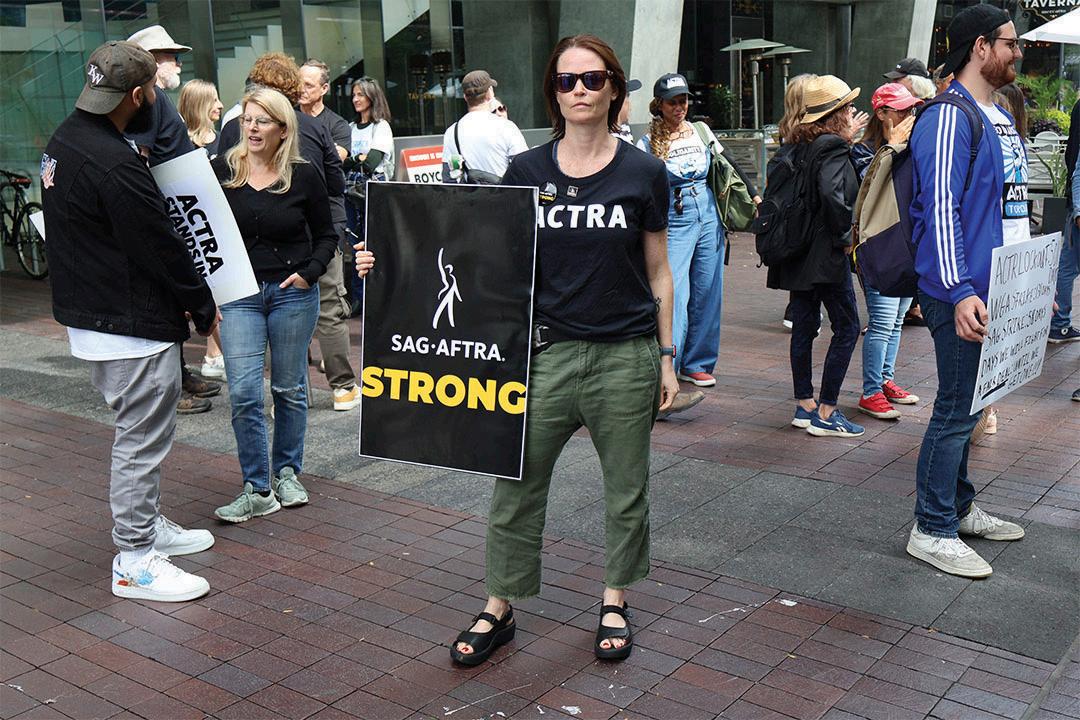
For the past 60 years, the two groups have regularly negotiated agreements under the terms of the National Commercial Agreement, the agreement that establishes the rules around English-language commercial production in Canada. But they reached an impasse in April 2022 over questions of foreign ad agencies producing ads in Canada using unionized workers.
ACTRA has filed a complaint with the Ontario Labour Relations Board, accusing the ICA of negotiating in bad faith by jeopardizing the union instead of working to reach a workable agreement.
In an interview with The Varsity, Eleanor Noble, the National President of ACTRA said, “During our negotiation, they decided to lock us out… They wanted to gut our agreement, cut our wages by 80 per cent. And we said no, and when we said no, they just locked us out.”
The ICA disputes this framing. “Much of the ACTRA rhetoric is simply not true,” the organization wrote in a fact sheet published on its website.
Demonstrators planned the rally’s location
strategically. ACTRA member Jonah Hundert called out Amazon and Apple — who own the streaming offshoots Prime Video and Apple TV respectively — for “trying to take away the livelihood of working artists.” During the protest, some of the demonstrators took the ACTRA flag and used it to cover the shiny silver Amazon logo displayed at the front of the building, blocking out the letters.
The long fight ahead
Being locked out of a commercial jurisdiction by the ICA means that countless ACTRA actors don’t have a place to showcase their work. This includes 28-year-old ACTRA Toronto member Dewey Stewart, who studied acting at York University. In an interview with The Varsity, he stated that the best way for viewers to show support during these times is to continue consuming art.
“Go see movies, watch TV shows, and keep on ingesting art because the more you do that, the more they understand that this is a very vital and needed fight.” Stewart stated that the true value of a production comes from its actors, writers, and theatrical and stage employees instead of its funders. Supporting show business, Steward argues, is the best way to demonstrate that fact to corporations.
When asked whether or not he sees an end in sight to the strikes, Stewart mentioned an interview from Deadline, in which a studio executive stated that he wanted the strike to drag on long enough that “union members start losing their apartments and losing their houses.” But Steward says that sentiment does not phase people in the industry like him: “Artists are built to fight. We’ve been fighting since day one just to get the job.”
In late 2022, Jennifer Aniston’s Allure Magazine cover story caused a stir in public opinion when she proclaimed that “there are no more movie stars.” In the same story, the Friends actress reflected on the world before iPhones and the internet, when people were still “talking to each other,” and lamented the death of glamour and mystique as an art form, poignantly reminiscing on how fun the Oscar parties used to be.
In Vanity Fair’s Hollywood 2023 issue, Ana De Armas, who portrayed a broken and fame-tortured Marilyn Monroe in the divisive movie Blonde, echoed Aniston’s sorrow in saying that social media has destroyed the movie star for newer generations. “The concept of a movie star is someone untouchable you only see onscreen,” she said. “That mystery is gone.”
Since the arrival of social media and the growing significance of its role in marrying public and private life, the old archetype of the movie star has been challenged, expanded, and, in other ways, done away with. Nowadays, movies and television are not the only visual escape for the public. We live in a world of TikTok, Twitter, Instagram, and YouTube, where people can garner their own
following by being likable and interesting; where an algorithm can accurately pick up and respond to your personality to show you the entertainment content that you want to see; where a spectacle of recreation and communication is accessible from your phone.
Today, it is not enough to be mysterious because money can be made from being the apple of the public eye. In her Allure cover story, Aniston confessed that she joined Instagram to promote her haircare company. De Armas also said that she would delete Instagram if she could, but she has other commitments: brand deals, access to an online audience to advertise her films, and the pressure to be likable and interesting before onlookers that increasingly demand intimate parasocial access to a celebrity’s personal life in exchange for the gift of fame.
Ana De Armas was right: a movie star should feel untouchable, mythical even, before their audience. Today, however, that means balancing a public persona, an online persona, and a private life to create the perfect parasocial balance of fact and fiction.
Some appear to have mastered this balance. Zendaya, for example, is a young actress with a wealthy filmography, starring in box office hits like Dune, the Spider-Man franchise, and The Greatest
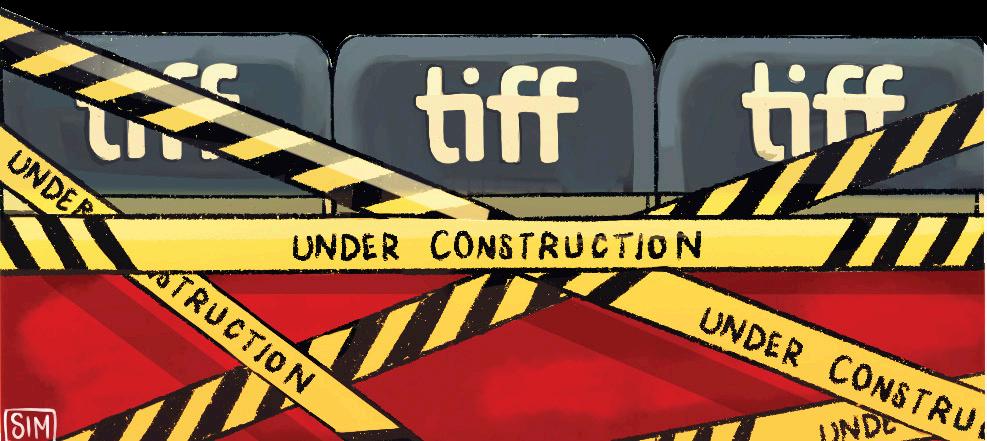 Emily Carlucci Comment Columnist
Emily Carlucci Comment Columnist
The Toronto International Film Festival is an extravaganza that transforms the city into a hub of film enthusiasts, celebrities, and industry professionals every September. While TIFF is renowned for its cinematic offerings, focusing on the festival’s impact on the streets of Toronto can highlight the accessibility challenges surrounding TIFF and their broader implications for urban planning.
The accessibility challenge
TIFF attracts diverse audiences, including individuals with disabilities who face unique setbacks when navigating the festival and its surrounding streets.
According to the Accessibility for Ontarians with Disabilities Act (AODA), venues and events like TIFF are required to be accessible. However, in practice, several accessibility issues persist in the event’s structure.
One critical aspect of accessibility at TIFF is the screening venues. While many venues have made significant improvements in recent years, not all are fully accessible. External theatres associated with TIFF still lack features like ramps, accessible seating, and proper lighting and signage for those with visual impairments. To me, it feels like there has been very little consultation with the people of Toronto and urban planners, and more focus on critics’ and VIPs’ comfort.
I believe TIFF has made many improvements worthy of praise in its Accessibility Plan. For example, the plan states that “open captioning, closedcaptioning, and onstage ASL interpretation for live
content” is slated to be included in all events by 2026.
I could not help but notice, however, that discussion on mobility issues is rare. The plan includes very little solution to these obstacles, if the obstacles are included at all. I do understand that making mobility promises are difficult, as some venues like the Royal Alexandra Theatre cannot be altered due to their protected status as heritage buildings.
Regardless of how TIFF planners resolve the issue, I hope that they listen to all moviegoers to make cinema and art accessible to everyone.
The role of urban planning TIFF’s impact on Toronto’s streets goes beyond the festival itself. The transformation of key areas, such as the Entertainment District, during the festival highlights broader urban planning challenges. The city’s approach to accommodating the festival’s influx of visitors can have long-lasting effects on accessibility and urban development.
One notable aspect of TIFF’s effects on urban
Showman. She’s active on Instagram and Twitter enough to create a parasocial bond with her fans, promote her work, and engage with her brand partnerships, but just enough to protect her private life from the invasive gaze of the public.
It’s a tactic that stars like Nicole Kidman, Dwayne Johnson, and Millie Bobby Brown also employ; where social media is treated and approached as a business model to build a brand and further build a public persona that drives your box office engagement and viewership.
Social media demands spectacle; like fortune, she favours the brave and the beautiful. In the past, it was enough to be charismatic on screen. That era gave us the likes of Meryl Streep, Denzel Washington, Leonardo DiCaprio, and Brad Pitt, for whom people flocked to the theatre to see because their last name was on a poster. Their last names drove ticket power with consistency.
Today, ticket power is one way to qualify a movie star, but with the internet and the doubleedged voyeurism of the public eye, we’ve made movie stars out of internet darlings like Margot Robbie, whose most recent film adaptation of Barbie crossed $1 billion at the box office; Paul Mescal, whose heart-rending debut in Normal People captivated the internet; Timothée Chalamet, who rose to fame after his turn as Elio in
planning is street closures. While these closures are essential for ensuring the safety of festival-goers, they can disrupt the daily lives of residents and businesses. The TTC has made efforts to strike a balance by providing alternative transportation options and stationing personnel to aid pedestrian traffic during the festival.
This aid from the TTC is more than welcome, but it does not negate the exacerbated consequences commuters face from the closures thanks to Toronto’s poor design. The 504 and 304 King buses set to replace streetcars drastically lengthen the commute for public transit users in a city with an already existing congestion crisis. Negatively impacting transit users’ experience lessens the reliability of transit use during peak times of tourism, when transit use could have potentially hit new financial peaks.
In an ideal world, buses would not be stuck in traffic because single-person occupancy vehicles would, and should, be a thing of the past. Unfortunately, we do not live in this urbanist utopia. Toronto is a city built for cars, so when cars are stuck in traffic, buses are too.
During my research, I found little public dialogue between TIFF and City planners, the TTC, and related transit-advocate groups. I’m disappointed that Toronto fails to take advantage of this globallycoveted event to clean up transit, as well as ensure accessibility and quick transit for not only tourists but also the people of the city.
the Oscar-nominated romance Call Me By Your Name; Stephanie Hsu; Robert Pattinson; Anya Taylor Joy; and others.

It is also important to note that the public’s image of the movie star is expanding beyond the ‘straight white’ archetype; we have racialized, like Daniel Kaluuya and Ariana Debose, as Oscar winners who continue to lead big film projects. With the move away from classical movie stardom has come the age of diversity among Hollywood’s top performers.

Because everyone has access to a phone and the internet, everyone’s voice holds a certain power. As people have exercised this power and spoken up through social media, nearly every demographic of viewers has come to see themselves being represented on screen. This “vox populi, vox dei” phenomenon has given us films such as Moonlight Black Panther, and Crazy Rich Asians Times are changing, and it is important that old and new movie stars read the signs and follow suit so that no one is left behind.
Divine Angubua is a third-year at UTM studying history, political science, and creative writing. He is the editor-in-chief of With Caffeine and Careful Thought and a staff writer at The Medium. He is an Associate Comment Editor at The Varsity.
To address the accessibility and urban planning challenges associated with TIFF, organizers need to take a multi-pronged approach.
TIFF should redevelop its accessibility plan to cover all aspects of the festival, from screening venues to transportation and street closures, as I feel the current plan is lacklustre. TIFF planners must develop this plan in consultation with experts and advocacy groups for people with disabilities. Additionally, this plan should be approached from an angle of piloting new initiatives for Toronto alongside urban planners’ advice. TIFF is a wonderful opportunity to not only revolutionize festivals but also to change the city for the better. Accessibility extends much further than just integrating those with disabilities; it also includes older citizens, children, and tourists. The lack of insight as to who is a part of these accessibility, transit, and mobility discussions is a paramount issue that demands public accountability. The people of Toronto should look forward to TIFF — not complain about its road closures and effect on city traffic. By continuing to approach this event from a place of dissonance, Toronto loses the spark of what I believe makes this city so great: community.
TIFF is not just a celebration of cinema; it’s also an opportunity to address vital issues related to accessibility and urban planning. By taking steps to improve accessibility, both within festival venues and on the city streets, Toronto can ensure that TIFF remains an inclusive and enjoyable experience for all attendees, regardless of their abilities. The collaboration between festival organizers and city officials, along with input from experts and advocacy groups, is key to making this vision a reality.
Ultimately, TIFF can serve as a model for creating a more accessible and inclusive urban environment that benefits everyone throughout the year.

You’ve probably heard of the infamous social media account under the name “U of Tears”: a sometimes dark, sometimes wholesome, but mostly comedic Instagram account that publishes anonymous confessions of U of T students.
With 19.1 thousand followers, it’s apparent that @uoftears_ has gained notability within the school community. Its growth is not surprising considering the nature of its posts, which range from hot takes, secret kinks, and love triangles to students’ hopes, worries, dreams, and contemplations of the future. The shock factor and absurdity of the account undeniably gain attention.
If you look beyond the immediate humour and entertainment, @uoftears_ is an outlet for students to create a community. In my view, the account provides comedic relief from the overwhelming academic experience at U of T, allows students to criticize and address some of the struggles they face at large, and also provides a space for students to reach out, connect, or simply vent.
Let’s face it: you probably didn’t choose U of T because of its insane party reputation, as we don’t even make the list of best party schools in Canada. Having a great social life here at U of T is possible, but student life and school spirit aren’t what the university is known for. It’s safe to assume that U of T is attractive mainly because of its high ranking in different publications such as Times New Higher Education or QS World University Rankings.
Although U of T students should be proud to be a part of a top-ranked university, U of T
(X) our long history of film criticism communities— as well, proves that there is a wealth of interest in the layers underneath the big screen. And where there is interest, there is opportunity.
And yet, that’s only the surface level of things. Maybe, as plebeian casual chick flick enjoyers, we will never understand the great minds of artists like Steven Spielberg and Christopher Nolan, or why they use this dialogue or that soundtrack. Or how they colour-graded the dreamscape for Leonardo DiCaprio to sprint through in Inception, or the inspiration behind the infamous boy-meetsscene. Maybe we can’t see any of this from the outside without the experience of being a producer. But isn’t the whole point to learn?
Of course, U of T already has its Cinema Studies department. Complete with a diverse course catalogue that extends an impressive range of themes, it boasts a promising look into the film industry and the careers that wind through it. But it is promising at best. As it currently stands, the department seems to have taken on a more theoretical approach to the degree, coddling an education from afar so as not to get anybody’s hands dirty. I may not be the most avant-garde expert, but even I can tell that the path to the arts is hardly through the books.
When we say we want to learn, we aren’t referring to the hundred-dollar textbooks that
teach us how to judge a rom-com, the formulas behind every jump scare, or studies on media after they’ve already passed the publishing goal post. You don’t learn to paint solely by reading Picasso’s biography. Film production encompasses the hands-on processes that take a movie from inception — great film, by the way — to release, the storyboarding to the final visual effects touches. That is what we want, that is what there ought to be.
Compare this to institutions like Toronto Metropolitan University (TMU), which has a Film Studies department. Whereas it still offers classic interpretative programs like Film Theory and Visual Studies, the degree takes a much more active, integrated perspective into film, providing classes like Film Production, Introduction to Editing and Sound, Directing for Camera, and more. I mean, do we really want to be bested by TMU? Sounds like it’s time for an upgrade.
As the Toronto International Film Festival wraps up this week, remember that behind the sparkles and standing ovations is a team of dedicated individuals who all got their start with a budding interest in the cinematic arts. In a few years, the people on that red carpet could very well be people we passed on campus this morning — people who found their calling through film production, if you will. But until U of T finds a place in its heart — and its funding — to provide a film production program for our students, I guess we’ll never know.
Isabella Liu is a third-year student at Victoria College studying public policy and international relations. She is an Associate Comment Editor at The Varsity.
also holds a reputation for being a depressing and rigorous school. There are probably a number of reasons why U of T gained this reputation of being a cold, soul-crushing hellscape — especially during winter finals.
I believe social gatherings and student communities are not so easy to foster in this environment due to a mix of Toronto weather that freezes you to the bone, the colossal student population of 97,678 in 2022–2023, the nature of a commuter school with around 75 per cent of its students commuting to campus every day, and the unfortunate layout of U of T’s campuses alone.
With three sprawling campuses, it is difficult to run into the same people and form a large school community. The St. George campus is spread out, separated by streets, and placed across a bustling city, while UTSC and UTM are isolated from the downtown core altogether.
As a UTSC student, I can attest to the difficulties of finding community on campus. Social clubs are hard to find, as most groups at UTSC are academics related, such as Health Occupations Students of America or the Biology Students Association. On top of that, the few groups I see at UTSC that are not academically associated — such as the Visual Arts Club or Prestige UTSC — do not hold weekly gatherings for club members, making it difficult to engage with the same people often.
The lack of social clubs and opportunities for social gatherings makes meeting people outside of class difficult. It is rare that all U of T students come together as one body, and for those who don’t participate in clubs or their college’s events, U of T can be a very solitary experience.
In my view, one of the only things that U of T students can bond over is these negative facets of the school. @uoftears_
has often provided an outlet for students to communicate their dissatisfaction.
Despite the vast separation, the account is relatable to U of T students across all campuses. Not only is its shocking, funny, and sometimes controversial content a humorous or entertaining break from schoolwork, but it also addresses this often gloomy and dispiriting nature of U of T.
Through @uoftears_, U of T students from all three campuses can relate and connect through social media. Those who commute large distances daily may not get the chance to bump into the same people or stay long enough on campus to join groups or clubs. Being online allows accessibility by allowing everyone to connect — and I believe this is the spirit of Instagram, after all. Even if it’s only through the comments on a post, some may feel less alone and more in touch with their peers online than in person.
On a lighter note, the account’s main purpose is for entertainment; a good laugh can be a saving grace at the end of a long day. U of T is a tough school, and university is tough in general. Sometimes, the small jokes, silly — or “humorously shocking” — confessions, and relatable rants are necessary to recover and reset from academics.
The name “U of Tears” is meant to poke fun at U of T’s somewhat soul-crushing nature. The essence of @uoftears_ is satirical and comedic at its root. It’s a place for people to satirize aspects of the school and jokingly connect over shared experiences at U of T. @uoftears_ often posts confessions that rightfully criticize this school’s environment.
I think that acknowledging and recognizing the school’s flaws makes others feel a little less alone.
The mental health of university students nationwide is understandably challenging. Postsecondary students have barely recovered from the effects of COVID-19, and U of T’s closed-off, academically concentrated culture doesn’t seem to help. Oftentimes, confessions and criticism bring attention to these aspects of school and help acknowledge that they exist. @uoftears_’ raising awareness is important for students to step back and recognize the flaws of this institution.
The confessions account also gives a platform to student voices in their most unfiltered and unapologetic tone possible, as everything posted on it is anonymous. Some confessions are lighthearted, while others are a whirl of emotions.
Either way, readers and commenters may feel more seen or heard when they relate to a post, or even just a little less stressed when they come upon a more humorous one. Sympathy, support, and honest advice on the platform allow students to engage with one another.
The Instagram page provides a place for students to relate to one another beyond the scope of school and create a student community. Overall, @uoftears_ is one of the few places that welcomes every U of T student to let them connect, share, criticize, or even cry — and it is also a hub for students to raise awareness of our school’s flaws.

@uoftears_ is changing the meaning of U of T’s student community
Unless you watch Barbie right after, Christopher Nolan’s Oppenheimer will probably leave you with a sense of moroseness. The movie focuses, as the name suggests, on Julius Robert Oppenheimer — a theoretical physicist who acquired the title “the father of the atomic bomb” — and his role in developing the atomic bomb at Los Alamos, New Mexico.
It might surprise you that the prospect of such a bomb had been looming over different physicists, nations apart, before the bombs that the US dropped on Nagasaki and Hiroshima were even built. The underlying physics of the atomic bomb’s invention constitutes a riveting history that swells with political tumult, prophetic science fiction, and pitiful moral tensions. The events in this quantum history are compressed in such a short time, progressing quickly like a cascading chain reaction that eventually — and inevitably — erupts into chaos.
1939: Splitting the atom — The basis of nuclear energy
Nuclear technology, like nuclear bombs and power plants, uses nuclear energy, which comes from the interactions in the nucleus of an atom.
An atom is the basic unit of all elements. Every atom contains a nucleus which consists of positively charged particles called protons and particles with no charge called neutrons, surrounded by clouds of negatively charged particles called electrons.
The protons in the nucleus repel each other. Yet, neutrons and protons are glued together in the nucleus by a strong nuclear force that overrides the protons’ repulsion of each other.
The strength of the strong nuclear force depends on the ratio of protons and neutrons in the nucleus. When the number of neutrons exceeds the number of protons, the atom can become unstable and needs to fling out energy or certain particles called alpha particles — composed of two neutrons and two protons — and beta particles — composed of a fastmoving electron. These forms of energy are
changing the nucleus by emitting radiation is called radioactivity. A radioactive element is unstable and likely to undergo a change in its nucleus.
In 1938 and 1939, a lab of German scientists including Lise Meitner, Otto Hahn, and Fritz Strassmann experimented with directing a neutron stream at a uranium nucleus. Uranium is an element whose atoms contain 92 protons, which is a relatively large amount of protons compared to other atoms; this makes it a heavy element. Additionally, uranium atoms also contain a higher number of neutrons than protons in their nuclei, which makes uranium radioactive.
By directing neutrons at the nuclei of uranium, which is the heaviest naturally occurring element, the scientists expected that a new, even heavier element would form. Yet, the lab was not able to identify any such newly created substances.
Finally, Meitner, along with her nephew Robert Frisch, figured out that if they shot only one neutron, the uranium nucleus — instead of absorbing the neutron — seemed to split apart into two lighter nuclei of different elements, barium and krypton. The singular neutron seemed to tip over the already unstable nucleus so that the strong nuclear force became overridden by the electrostatic repulsion in the nucleus until the uranium atom split.
Yet, this concept was incredibly confusing. How could a single neutron split the nucleus into two when no one had ever been able to chip off more than a fragment of the nucleus before?
Where and how was the large amount of energy required to split the nucleus generated?
The answers to these questions, of course, lie within Albert Einstein’s famous equation: E = mc2 1905–1909: Einstein’s energy-mass equivalence and its implications
E = mc2 is a fairly simple equation, but it was truly revolutionary for its implications about energy and mass. Published in Einstein’s 1905 paper, “Does the Inertia of a Body Depend Upon Its EnergyContent?”, the equation says that energy (E) is equal to mass (m) times the speed of light squared (c2). Essentially, Einstein’s equation says that mass and energy are interchangeable. Mass can be viewed as really concentrated energy.
incredible amount of energy. To put this speed into perspective, remember the last time you were on Gardiner Expressway in a car moving at 100 kilometres per hour. Now imagine you were going 11 million times faster than that.
Finally, imagine that speed multiplied by itself — that is, squared. This is the magnitude multiplied by mass in Einstein’s equation; so even a subatomic mass times this magnitude of speed yields a massive amount of energy.
In his book E=mc²: A Biography of the World’s Most Famous Equation, David Bodanis writes that mass is “simply the ultimate type of condensed or concentrated energy,” whereas energy is “what billows out as an alternate form of mass under the right circumstances.” What might these circumstances be?
Well, the splitting of the atom, for one.
In 1909, four years after Einstein’s publication, Meitner attended a conference in which Einstein discussed his findings on the energy-mass equivalence. Meitner recalled: “In the course of [Einstein’s] lecture he… [took] the theory of relativity and from it derive[d] the equation: energy = mass times the square of the velocity of light, and showed that to every radiation [which is a change in the nucleus] must be attributed a… mass. These two facts were so overwhelmingly new and surprising that, to this day, I remember the lecture very well.”

1938–1939: Nuclear fission
Fast-forward to December 1938: Meitner calculated that the electrostatic repulsion between the protons in the uranium atom had to be around 200 million electron volts (MeV) for them to fly apart from each other and split the nucleus.
In his previously mentioned book, Bodanis puts the magnitude of this energy into perspective: “In Berkley, California, a building-sized magnet was being planned that might, when charged with more electricity than the whole city of Berkley ordinarily used, power up a particle to 100 MeV.” So, there was something in the infinitesimally small nucleus that was generating double the energy it takes to power a whole city.
Further studying the reaction, Meitner’s team noticed that its reactants — the uranium atom and the neutron that hit its nucleus — and its products — the krypton and barium nuclei and the extra neutrons released by the reaction — did not have the same mass. This missing mass turned out to be equal to approximately a fifth of a proton, a vanishingly tiny amount. Yet, this missing mass seemed to generate 200 MeV of energy: enough to split a nucleus apart. How?
From Einstein’s equation, we see that this tiny mass is amplified by the enormous magnitude of the speed of light, squared.
This tendency of an unstable nucleus to split into two smaller nuclei, releasing energy, is now known as nuclear fission. Although “atomic bomb” is the more popular term, it is the splitting of the nucleus of the atom that releases energy, so “nuclear bomb” is more accurate.
Tragically, Lise Meitner — due to her status as a Jewish woman — was never given official credit for being the intellectual leader of the team that discovered fission. Instead, Otto Hahn ended up being the one who won a Nobel prize for the revolutionary discovery: a not particularly surprising show of sexism by the Nobel prize committee.
Fission, named in Meitner’s and Frisch’s 1939 paper titled “Disintegration of Uranium Neutrons: A New Type of Nuclear Reaction,” was revolutionary. The astounding amount of energy available for use in a single atom opened doors to many possibilities — like powering cities in a cleaner and more efficient way.
But it also nudged the looming possibility of a devastating nuclear weapon.
A young physicist called Leo Szilard — who collaborated with Einstein on building safer fridges in the 1920s — was concerned that a nuclear weapon was being developed by the Nazis in light of the discovery of nuclear fission. In fact, he was far ahead of his time and had been worried about such a weapon long before 1939, when Meitner, Hahn, and Strassmann were shooting neutrons at nuclei.
In 1933, Szilard attended a lecture by Ernest Rutherford, a pioneering physicist in nuclear physics. The lecture discussed the H.G. Wells 1914 science fiction novel, The World Set Free which anticipated an atomic bomb. During the lecture, Rutherford actually dismissed this idea, which deeply irritated Szilard.
While walking home from this lecture, Szilard had an epiphany that if a nucleus was hit by a neutron and in turn released two or more neutrons, those newly released neutrons would hit other nearby nuclei, starting a chain reaction that could release a massive amount of energy.
With the discovery of fission in 1939, Szilard theorized the possibility of such a self-sustaining chain reaction that would continue the process of fission over and over again, releasing an enormous amount of energy. Szilard recognized that this continuous fission cascade would form the basis of a prospective nuclear bomb.
When Adolf Hilter came to power in January 1933, Szilard became increasingly concerned about the implications of a possible atomic bomb being developed in Nazi Germany. In October 1939, Szilard convinced Einstein to pen the famous letter to US President Franklin D. Roosevelt to warn about the possible development of atomic weapons based on the nuclear chain reaction in Nazi Germany.
The letter also requested governmental funds to run a large-scale experiment, using a nuclear reactor, that would test whether a sustained nuclear chain reaction was even experimentally possible.
In 1942, Szilard and a group of 48 other scientists ran a successful nuclear chain reaction in a nuclear reactor, which was designed to contain and control fission. This confirmation of a nuclear chain reaction that could sustain itself started a frantic global race toward developing a nuclear weapon. Under the direction of President Roosevelt, the Manhattan Project was set in motion, led by a shy and arrogant theoretical physicist called Julius Robert Oppenheimer.
This article has been shortened for print. The full version can be found online at thevarsity.ca or by following this QR code.


Hollywood, sci-fi authors, and other pop culture institutions have long included science in their tools of the trade. Take, for example, the chemistry in the James Bond the cloning and molecular biology in Park
Lately, though, this trend has been reversed, with scientists including references to pop culture in their scientific publications. The pop culture shoutouts vary in their meaningfulness, from simple hooks in the introduction of an article to the naming of entire genera after pop stars.
One of the most interesting uses of pop culture in science is the naming of the fern genus Gaga. One characteristic that all of the distinct species within this new genus shared was a “GAGA” pattern in a specific part of their DNA sequences. DNA — short for deoxyribonucleic acid — consists of four nucleic acid bases: adenine (A), guanine (G), thymine (T), and cytosine (C). So, the species in the GAGA genus have a segment of their DNA that alternates between guanine and adenine bases.
The authors named the genus after Lady Gaga based on this pattern, as well as on her commitment to equality and individual expression. The authors
wrote, “Because Lady Gaga speaks to the need for humanity to celebrate broad differences within its own species, we hereby provide
use of a pop culture reference I’ve seen is the use of the movie Fantastic Voyage as a frame of reference in understanding DNA
Did you live in fear of your lab partner unleashing a biological weapon upon your school? Do you remember him complaining about high school being a microcosm of the cesspool that is human society? Imagine, instead, that your high school is the entire planet, and he successfully wipes out the human race.
If this was a compelling speculation exercise for you, then Margaret Atwood’s 2003 Oryx and Crake might be your next favourite book!

Jimmy’s world pre-apocalypse and preCrake
We are introduced to Snowman — previously known as Jimmy — a young man in early adulthood who has begun to resemble a decomposing corpse. Our human protagonist lives in a post-apocalyptic world where the only other human-esque life is the “Crakers”: a species manufactured by Jimmy’s friend, Crake, to
come in as many colours as scented soap bars. Through flashbacks, we learn about Snowman’s past life as Jimmy and his relationships with Crake and with a child named Oryx. For someone who shares half the novel’s title, however, Oryx’s voice is unheard.
Pre-apocalypse, Jimmy grows up in a dystopian caricature of the present-day world. Corporations have taken over, and elite scientists working in these companies live in gated communities called “Compounds.”
We see Jimmy bounce from Compound to Compound throughout his childhood: from OrganInc — so called because they sell organs, and they’re organic — to NooSkins — as in “new skin” — and finally to RejoovenEssence — the place where the tragic fate of the planet takes place.
Atwood links NooSkins with vanity; it is plastic surgery on steroids. In the novel, characters can replace their skins with a literal new one — a prophetic insight before the pre-Kardashian world of 2003.
However, NooSkins in Atwood’s novel only criticizes plastic surgery without acknowledging its virtues. In our present-day real world, the closest thing to NooSkins has been a technology driven by altruism. Skin grafts help burn victims and children with butterfly skin — a condition that results in a fragile epidermis.
Further, the book adopts a sneering, elitist attitude toward genetically engineered organs and food. Genetically engineered food aims to help create a more sustainable form of nutrition — would you rather eat factory-farmed chickens who’ve lived in unendurable conditions? Also, xenotransplantation — transplantation between species, especially between genetically modified pigs and humans — carries the prospect of helping people who might be stuck on waiting lists for donor organs. In the novel, these technologies are used in excess to criticize scientists’ egotism.
The Oryx and Crake society is littered with genetically engineered creatures, such as transgenic pigs for organ harvesting called “pigoons” and domesticated cross breeds between raccoons and skunks called “rakunks,” because the human condition is the irrepressible urge to pet a furry creature.
Atwood is critical of the overzealous scientific community playing god, but the story fails to recognize that this very community is responsible for modern medicine and lengthening the average lifespan. Transgenic animal models are used to study the effects of enforcing the expression of specific genes, like oncogenes — which are susceptible to causing cancer if mutated — or tumour suppressor genes — which regulate cell division and other processes implicated in cancer.
An adolescent Jimmy forms an everlasting friendship with Crake, a fellow human. After high school, Crake heads off to the prestigious WatsonCrick Institute to study biology, and Jimmy to the much less illustrious Martha-Graham to study the only utilitarian way English can be used — marketing.
After a series of monotonous jobs, Jimmy reunites with Crake, who offers him a job at RejoovenEssence to work on the Paradice Project. In this major project, Jimmy helps advertise pills that would rejuvenate youthfulness and sex drive but also sterilize the masses — the latter part of its purpose not to be disclosed to said masses.
Other pop-culture references in papers are much smaller. “Fantastic Yeasts and Where to Find Them: the Hidden Diversity of Dimorphic Fungal Pathogens” in the journal Current Opinion in Microbiology well describes the subject of its paper, but the movie referenced in the title is never mentioned again.
Coming full circle, there are increasingly more pop culture references in science articles. An article called “Pop-culture references in peer-reviewed scientific articles” by Arun Richard Chandrasekaran in lays out how pop culture references could be used to engage students as well as general audiences. He believes the rise of interdisciplinary journals makes it more important for scientists to appeal to audiences outside their fields and presents the pop culture reference as a solution.
The trend of including pop culture references is still in its infancy, but it is slowly becoming more prominent. From naming a fern genus after Lady Gaga to making an analogy between drug delivery vehicles and the submarines in Fantastic Voyage, scientists have been taking advantage of pop culture references to explain or introduce science ideas in a memorable way and to ground the science in more publically accessible knowledge. It’s really a way of democratizing science research.
While Atwood might have included this detail as a criticism of the gruesome history of scientists withholding information from participants or deceiving them in participatory research, it might also be seen as another criticism of mass marketing and how governments and corporations conceal information from civilians.
The second major project spearheaded by Crake is creating a superhuman species — the Crakers, the legacy of humanity. This might be Atwood’s criticism of the god-complex scientists suffer from — Crake acting as a god by creating a new species named after himself. They are the creatures that stay after humanity has perished post-apocalypse. Present-day Jimmy, Snowman, watches over the Crakers.
A cautionary tale turned comedic Atwood might have been hoping to caution the reader about the effects of unmoderated plastic surgery, genetic engineering, and other science technologies, as well as how capitalism leads to science being used for corporate benefit.
However, this point wobbles on the weak legs of underdeveloped characters and a melodramatic ending. Should I be fearing corporations misusing science or a manic scientist massacring humanity?
Crake represents a philosophical dilemma regarding how messed up humanity is; he poses an important question — are we worth saving? Should we just be replaced by a better, kinder species? But Crake’s ability to massexterminate society all by himself just to replace us with humanoid creatures that smell like scented candles ends up being more comedic than cautionary. The critical potential of the novel is undermined by its childish, self-serving characters and the trivial outcomes of their actions.
New technology can lead to social disparity because there is always a question of who has access to this science and its applications. But isn’t the problem with whose hands steer the vehicle of science inquiry to devastation? Must humanity leave its misery in the hands of an uncaring divine being? Why should we not “play god”? Science is a deity of crossroads: it only leads us down the path we choose.
I would give this book 1.5 stars out of five — pretty prose but thematically unsatisfactory. As for speculative fiction: next time, the author should speculate on something else.
Streaming has revolutionized on-demand content that can be binge-watched in a day — creating the perfect opportunity for motorsport to find new sets of eyes. Into the Netflix pits came Drive to Survive , a Formula 1 (F1) docuseries. Debuting in 2019, the series recapped the 2018 F1 World Championship and welcomed new fans to the intricacies of motorsport, while creating stars through its strong focus on drivers and team leaders. The series has inspired other similar sports docuseries — but it’s also controversial for exaggerating racers’ drama.
The impact of Drive to Survive
Four more seasons have come since, and the success of the docu series is evident. Season three had a week one viewership of over 243,000 in the US. Season four nearly doubled this, with a week one viewership of over 407,000, and broke into Netflix’s top 10 in 56 different countries. This year saw the release of season five back in February, and week one viewership was recordbreaking yet again, with nearly 570,000 viewers — a 40 per cent increase from 2022.
But the crowning achievement of Box to
Box Films’ hit series isn’t its own success. Rather, it’s how that viewership has carried over to F1 itself. Except for during the 2020 season, which was shortened due to the pandemic, per race average viewership in America has been steadily increasing since 2017. In 2017, per race average viewership was at 538,000. After Drive to Survive ’s first season in 2019, the per race average rose to 672,000. In 2022, that number soared to unseen heights, at 1.21 million viewers in the US per race.
Even with such success, the show hasn’t been without its critics. An entire season’s worth of drama and off-the-track politics wasn’t enough, so the show has relied on exaggerating rivalries, sometimes by misrepresenting radio messages. For example, according to Carlos Sainz, the third season’s depiction of the friendly rivalry between himself and Lando Norris was “pushed a bit too far.” Norris, while more forgiving, reiterated this sentiment. The creative liberties taken by the show led Max Verstappen, who is currently on his way to a third F1 championship, to refrain from participating in the series’ fourth season.
But as the show has taken those liberties, it seems to have caught the eyes of a new audience. A survey in 2021 found that the average age of F1 fans has dropped from 36 to 32. The survey also showcased that the sport
Asia-Pacific, and Africa than in a similar survey conducted in 2017.
The question becomes: can such success be sustained without those liberties? While the definitive answer lies in the future, we can make an educated guess.
Drive to Survive seems to be moving to a more realistic depiction of the sport, as marked by the return of Verstappen this season. After a discussion between the two-time world champion and producers, Verstappen felt he had found common ground with Drive to Survive on how drivers should be portrayed.
That doesn’t mean the show has stopped its antics completely. Episode five of the newest season featured a misplaced radio message of Estaban Ocon stating, “that feels like a win today,” after finishing eighth in France. Ocon believes the clip was from either his fourth-place finish in Japan or fifth-place finish in Austria. Although the clip was a misrepresentation, its use didn’t lead to any exaggerated rivalries.
Another example of this style of docu-series is Full Swing, Box to Box Films’ golf docu-series that debuted earlier this year. Nielsen Media Research revealed that 63 per cent of Full Swing viewers tuned into the Professional Golfer’s Association Tour in the two months after its release, and 11 per cent of those viewers tuned in to Full Swing without having watched tour coverage for six months before the series’ release.
Full Swing’s success has been met with a renewal for another season — without relying on forced drama. The majority of criticism regarding the show has revolved around the lack of probing regarding certain athletes’ choices to participate in the Saudi-backed LIV Golf tour.
Both the latest iteration of Drive to Survive and the newly debuted Full Swing are steadily moving in a grounded direction while increasing viewership in their respective sports all the same. Drama has given way to a focus on the true stars: the athletes and the games.
Racing movies have always been popular in Hollywood, often featuring thrilling, high-speed chases, intense rivalries, underdog stories, and emotional challenges that audiences can relate to. Successful movies like Senna, Rush, and Ford v Ferrari all have storylines centred on famous rivalries. They have contributed to motorsports’ growth by telling exceptional stories and inspiring new fans.
2008 article, writer Randy Williams noticed that there are only a few classic racing films in film history. Historically, the genre has failed to create excitement over the years and was losing its audience. So, what changed in the last 15 years?

Capturing the realism of motorsport involved a combination of factors: competitive rivalries, technical accuracy, and the emotional connection between athlete and audience that is found in the sport itself.
It is extremely difficult to keep the balance between these three factors and deliver a quality product that is likely to succeed. Usually, in the past, good stories couldn’t be matched with the required visual effects due to the inadequacy of the technology of the time. On the other hand,
shots, adding environmental elements, simulating car damage, and seamlessly integrating computer-generated imagery (CGI) with liveaction footage, all while enhancing the safety of action shots.
Gran Turismo (2023) uses VFX to create an almost perfect reality, never making the audience feel that it is a visual effect. Some of the most important racing sequences were shot using CGI, and, surprisingly, the film crew never went to some of the real tracks to shoot. Gran Turismo is
and scanned genuine cars from museums and private collections. When stunts were not possible, an F1 simulator was brought in to help create a replication of the reality. Even though Rush misses or changes some details about their friendship to preserve the feeling of opposition between drivers, it presents a very realistic movie with its story and visuals.

Released in 2021, Ford v Ferrari — unlike Gran Turismo and Rush — used CGI sparingly on track, only to help populate the stands. The majority of racing sequences were shot with experienced crew, drivers, and highly advanced technical equipment. It was still as expensive as VFX, but was an example of a different and effective decision made by the director. With its desire to maintain historical accuracy, the film needed an accurate image of the racing world. As a result, it uses real cars and professional drivers to capture the intensity and realism of Ferrari’s clash with Ford in the 1960s. Ford v Ferrari has been regarded as a realistic race movie.
In the last 15 years, racing movies have experienced a remarkable renaissance, largely driven by the perfect fusion of compelling storytelling and advanced VFX. This resurgence marks a departure from the genre’s earlier struggles when technological limitations hindered its ability to deliver a realistic racing experience.
Today, visual effects play a pivotal role in racing movies. The future promises to be filled with even more thrilling and authentic experiences for both racing enthusiasts and cinema lovers. Racing movies evolved from being imitations of reality to a gateway for an interest in a new sport. Racing movies are in their peak and set to continue their grand journey, captivating audiences far and wide.
The perfect blend of technology and authenticity has fueled the genre’s comebackAtinc Goc Varsity Contributor VINCENT QUACH/THEVARSITY JESSICA LAM/THEVARSITY
On September 14, the Varsity Blues women’s hockey team played their first exhibition match of the season at Varsity Arena against the York University Lions. It was a solid performance overall, and the reigning McCaw Cup champions defeated the Lions 7–4.

What happened
It was a great start to the game for the Blues, as their offense scored four goals in the first period. New Blues forward Abby Whitworth scored the first goal with an assist from defender Madison Tiro. Whitworth’s performance was great, and she worked well with the team dynamic.
Just minutes later, Blues forward Emma Elders scored the Blues’ second goal with no assist. To round off period one, Blues captain
Taylor Trussler and defender Aubery Cole scored two separate power-play goals. Yet the Lions had also scored two goals in the period, placing the team at 4–2 as they began the second period.
Kobe Bryant joins a long list of NBA legends to be honoured with a statue
 Rayan Rahman Varsity Contributor
Rayan Rahman Varsity Contributor
On their social media accounts, the Los Angeles Lakers and Vanessa Bryant recently announced that the team would be unveiling a bronze statue of Kobe Bryant in front of the Lakers’ stadium, the Crypto.com Arena. The ceremony will occur before the team’s matchup against the reigning NBA champions, the Denver Nuggets, on February 8, 2024 — a date specifically chosen to honour Bryant’s jersey numbers, eight and 24.
Arguably one of the best Lakers players of all time, Bryant tragically died on January 26, 2020. The Lakers previously held a memorial service on February 24, 2020. In 2017, Bryant also had both of his jerseys retired by the Lakers.
In 2021, he was posthumously inducted into the NBA Hall of Fame. Bryant deservedly received recognition for his services to the Lakers, and this latest honour will bring together the fans, Bryant’s family, and the Lakers even more.
Hearing this news, you may have a question: how does the NBA honour influential players after
they leave the sport? The answer is that there are two main ways that the NBA memorializes players: through jersey retirements and statues.
Jersey retirements
Typically, to memorialize a player who’s retired, an NBA team will retire the jersey number of that player, removing it from circulation so that new players will no longer be able to pick that number. Generally, for a team to retire a player’s jersey, they had to be an exceptionally elite player for that team.
Having won the most NBA championships in history — alongside the Boston Celtics — the Lakers are known for their winning history. They’ve had various legendary players on their team: Kareem Abdul-Jabbar, Earvin ‘Magic’ Johnson, Wilt Chamberlain, Jerry West, and Elgin Baylor. They’ve all been inducted into the NBA Hall of Fame and also had their jerseys retired by the Lakers.
If a player was an elite player for multiple NBA teams — or even if they were an all-time great for a single team — they might get their jersey retired by multiple teams. Chamberlain got his jersey retired
The second period was a struggle. While the period began with a Blues goal from forward Katy McKenna, the team quickly received two penalties. The first penalty was served to Cole for crosschecking, and the second penalty was handed to forward Abby Howland for boarding, just minutes later.
Despite these penalty issues, the second period
ended with U of T still holding a 5–2 lead. Overall, it was evident that the Blues’ morale was high, and they set up to secure the win in the third period.
Tension filled the final period. With the Blues eager to win and the Lions working to make a comeback, the game’s pace quickened. With 15 minutes left in the game, the Blues were handed a significant advantage, as Lions defender Ava Ricker-Singh received a 10-minute misconduct penalty for unsportsmanlike conduct.
The advantage allowed Blues forward Juliette Blas-Savoie to score a power-play goal, and the team took a dominant 6–2 lead. Minutes later, Blues forward Sophie Graburger scored the Blues’ seventh goal. However, the Lions continued to fight, scoring two goals near the end of the third period.
Overall, the Lions made a total of 21 shots on goal, with the Blues’ goalies, Madison Roche and rookie Carlee Vance, making a combined 17 saves.
What’s next
In a postgame interview with The Varsity, Trussler praised their first-year players, including Vance, who got to have an amazing opportunity to play and show their skills.
Next, the Blues will travel to play Princeton University Tigers on September 22. Two days later, the team will play against the Cornell University Big Red in Ithaca, New York.
by three teams, which is the most for an NBA player. Michael Jordan got his jersey retired by the Chicago Bulls and the Miami Heat — though he never played for the Heat, they retired his jersey out of respect. Furthermore, the NBA retired Bill Russell’s jersey number across the whole league after his death in July 2022.
Steve Nash is the only Canadian to have his jersey retired in the NBA. He got his number 13 jersey retired by the Phoenix Suns, memorializing his back-to-back MVP seasons in 2005 and 2006, along with his runner-up MVP season the following year. Nash was especially vital and iconic to his team, as the Suns were never really competitive without him during the years he played with them.
Statues
Besides getting a jersey retired, if they were an all-time great, a player may receive the honour of getting a statue in front of a stadium — usually of the NBA team where they made the biggest impact. For example, after retiring, LeBron James will reportedly get his jersey retired by all three teams he has played for in his career — the Los Angeles Lakers, Cleveland Cavaliers, and Miami Heat. According to NBA Hall of Famer James Worthy, James also deserves a potential statue in Cleveland and Los Angeles.
Since Kobe Bryant was one of the greatest basketball players of all time, of course, his team is making him a statue. Other greats, like Larry Bird, Jordan,
keeping us in it throughout the game,” said Grima in a postgame interview with The Varsity. Grima expressed that he simply stepped up to defend his teammate.
With the Gee-Gees on the power-play as a result of the penalty, Ottawa scored their third goal of the evening. The Gee-Gees now trailed a point behind the Blues.
“I could’ve done a better job,” Grima admitted later, reflecting on his penalties. “Next time I’ll keep my emotions in check, [but] thank god my team could bail me out and finish [with] the win.”
Abdul-Jabbar, West, Russell, and Johnson, have all had statues made by the respective teams they are most fondly remembered by.
Looking ahead into the future, apart from James, Stephen Curry of the Golden State Warriors, Giannis Antetokounmpo of the Milwaukee Bucks, and Nikola Jokić of the Denver Nuggets all currently have a clear case to get their own statues and their jerseys retired after their careers end. With both Curry and James getting older, the era of our current great players is approaching its end, which means we may see more tributes in the near future.
Bryant’s statue in front of Crypto.com Arena next year will complete and memorialize
On September 15, the Varsity Blues men’s hockey team kicked off their preseason on home ice against the Ottawa Gee-Gees. It was a lively game, and the Blues’ defense put them in a spot to take home a 4–3 win.
What happened
The Blues found their rhythm early in the game, eager to get back on the ice since their season ended in March. Second-year forward Nicholas Wong kept the Gee-Gees on their toes by scoring two goals in the first eight minutes of the game. Soon after Wong’s second goal, Blues defenseman Emmett Serensits scored a power-play goal assisted by forward Ben Woodhouse, extending the Blues’ lead

to 3–0 heading into the second period.
Blues forward Julian Recine opened the second period with an unassisted goal — his first with the team. This kind of gameplay is something to look out for as the Blues move through the season, especially from Recine, a rookie player who is clearly integrating well with the rest of the team. Yet, the Blues soon lost their 4–0 lead when Ottawa scored two power-play goals to put themselves on the scoreboard.
The third period was a rough one for the Blues, as defenseman Nick Grima accumulated two penalties. The second penalty for Grima nearly cost the Blues the game, but the referees only gave the penalty after Grima attempted to defend his goalie, Jett Alexander.
“I saw [a Gee-Gees player] take a couple [of] whacks at our goalie Jetter there, who was
With tight defense and consistent saves from Alexander, the Blues managed to hold the lead and secure their first win of the preseason.
“I think our team did a great job getting into the plays and moving pucks quickly,” said Wong in a post-game interview with The Varsity. He specifically praised his fellow forwards Graham Dickerson and Bill Moskal for their speed and playmaking. “We’re just kind of opening space, moving in and filling into lanes and [making] opportunities happen,” he added.
What’s next
After a 3–0 loss in their game against the Carleton Ravens on September 16 — covered in an online article on The Varsity’s website — the Blues will host Wilfred Laurier Golden Hawks in their next game at Varsity Arena on September 22.
A strong start to a new season of Varsity Blues men’s hockeyAlessia Baptista Varsity Contributor






